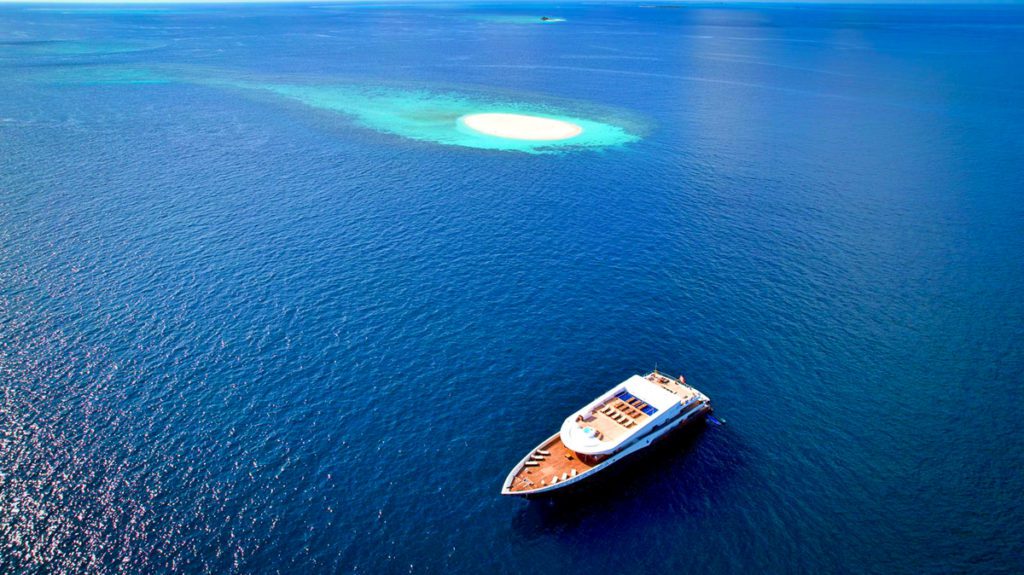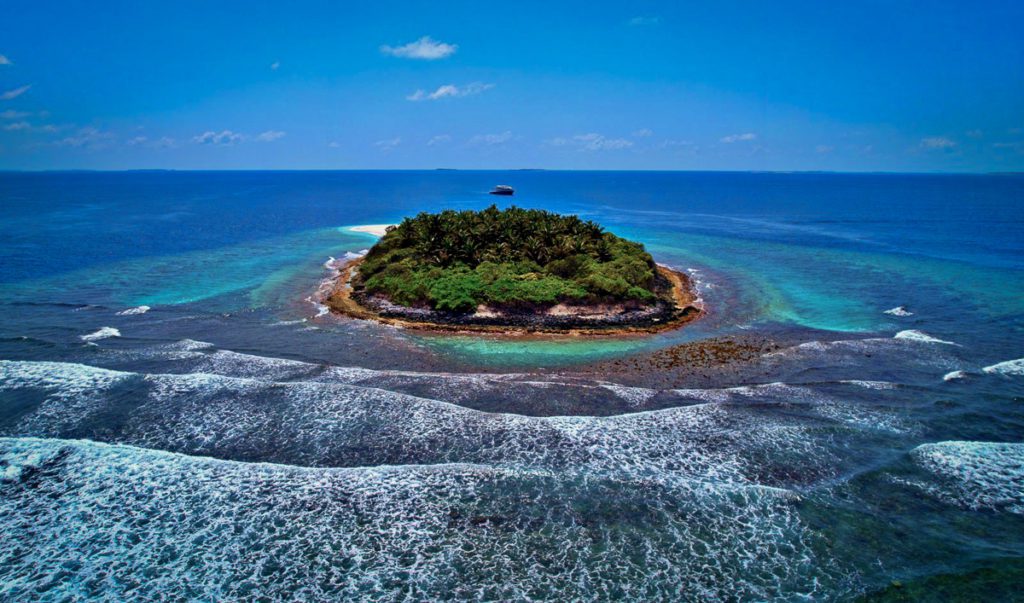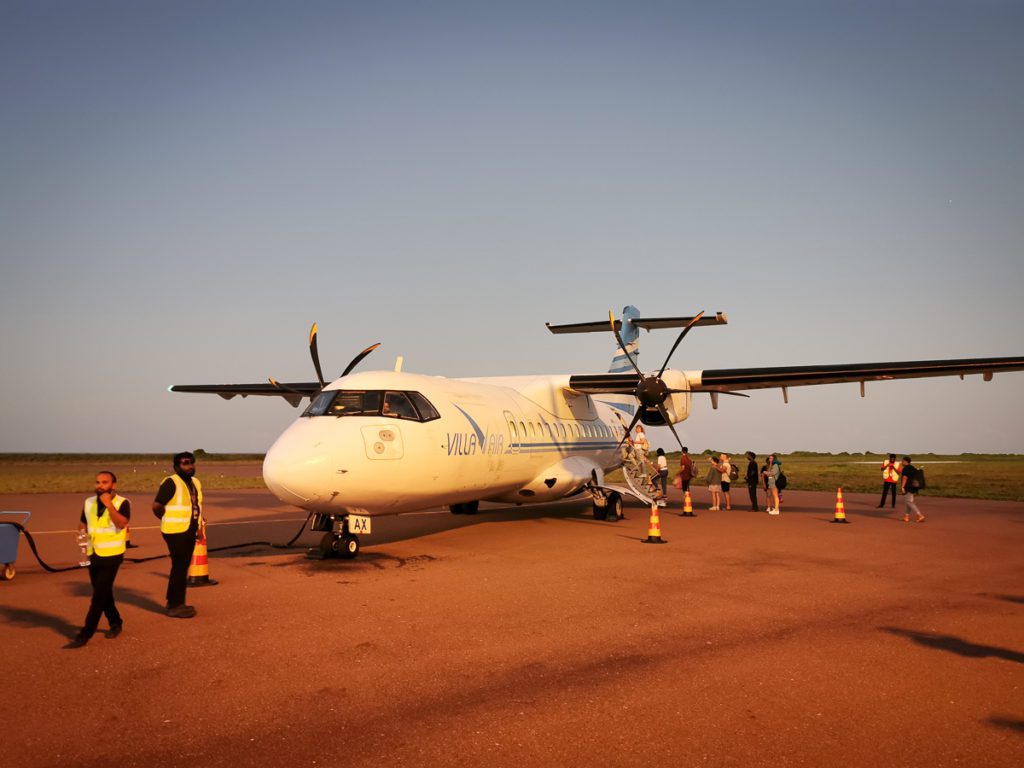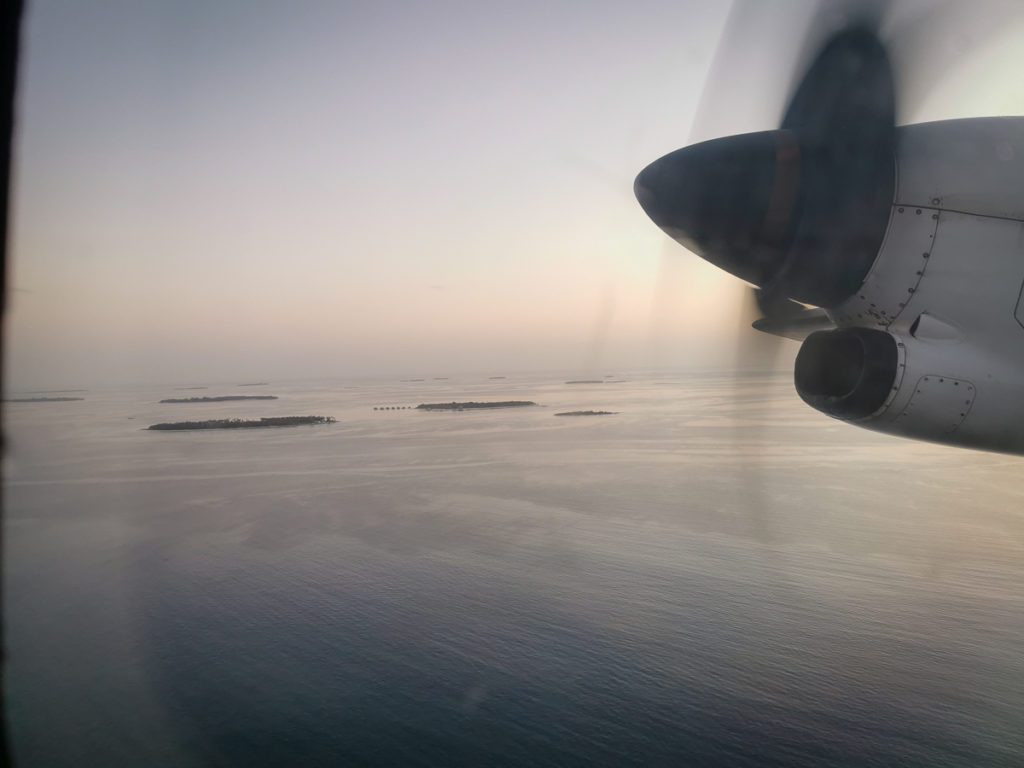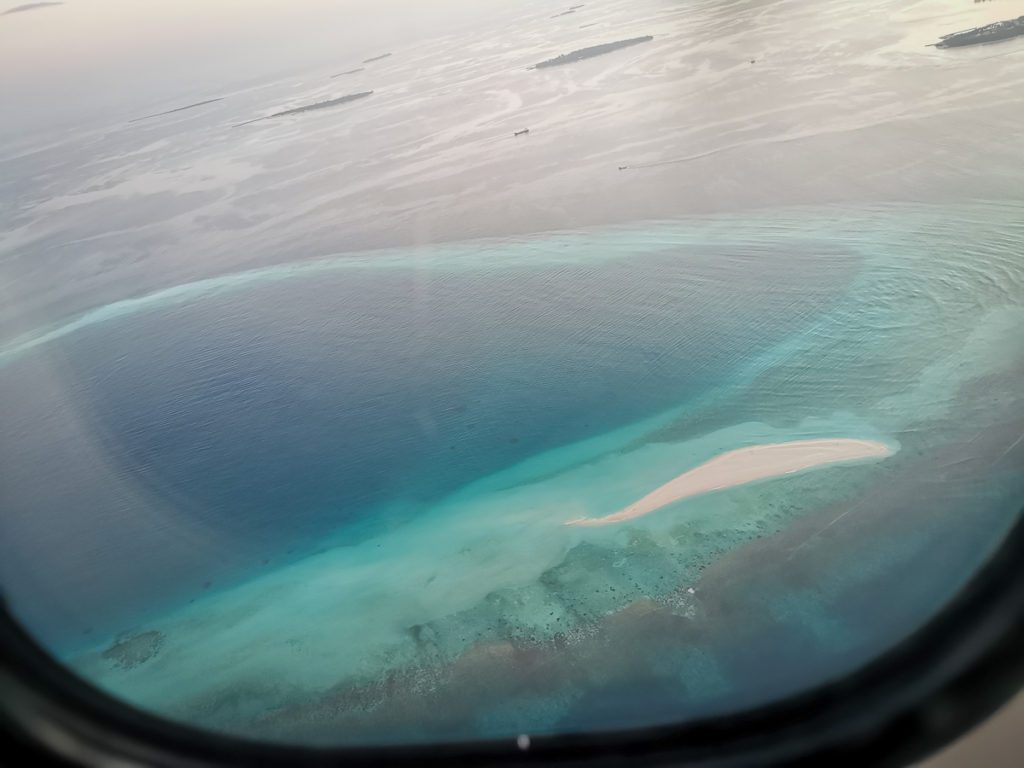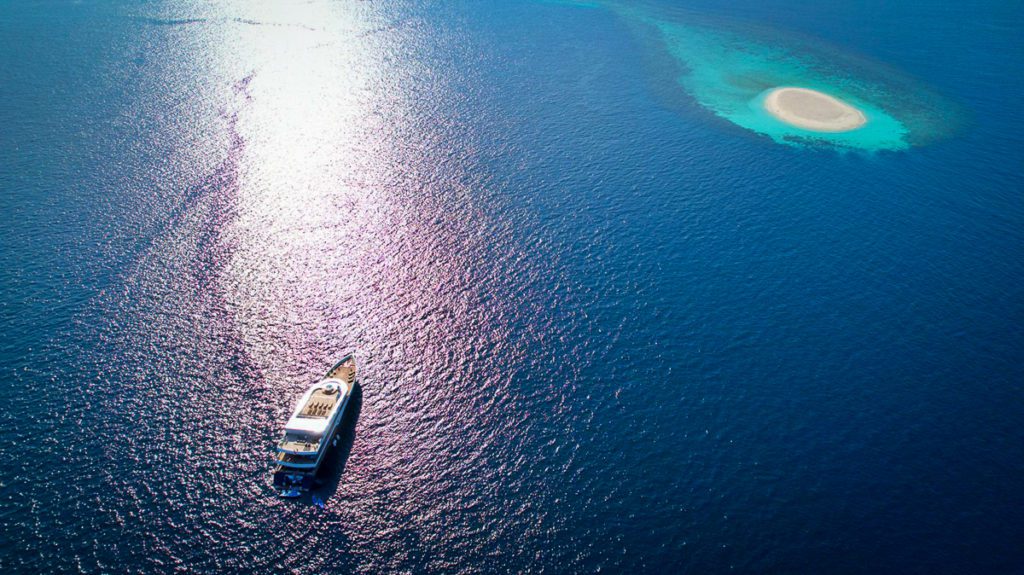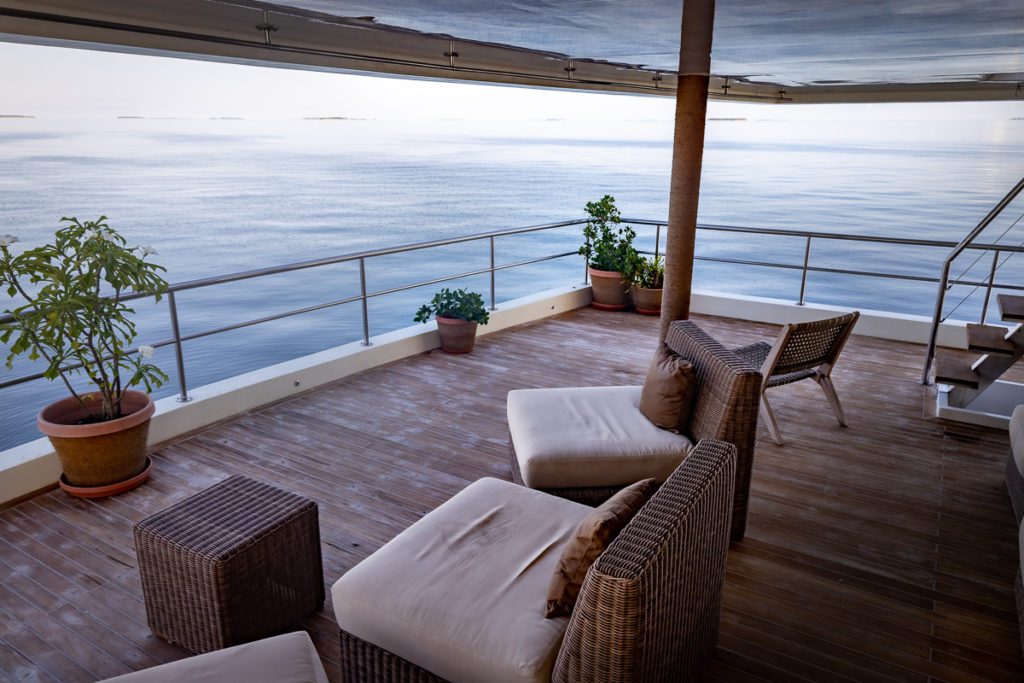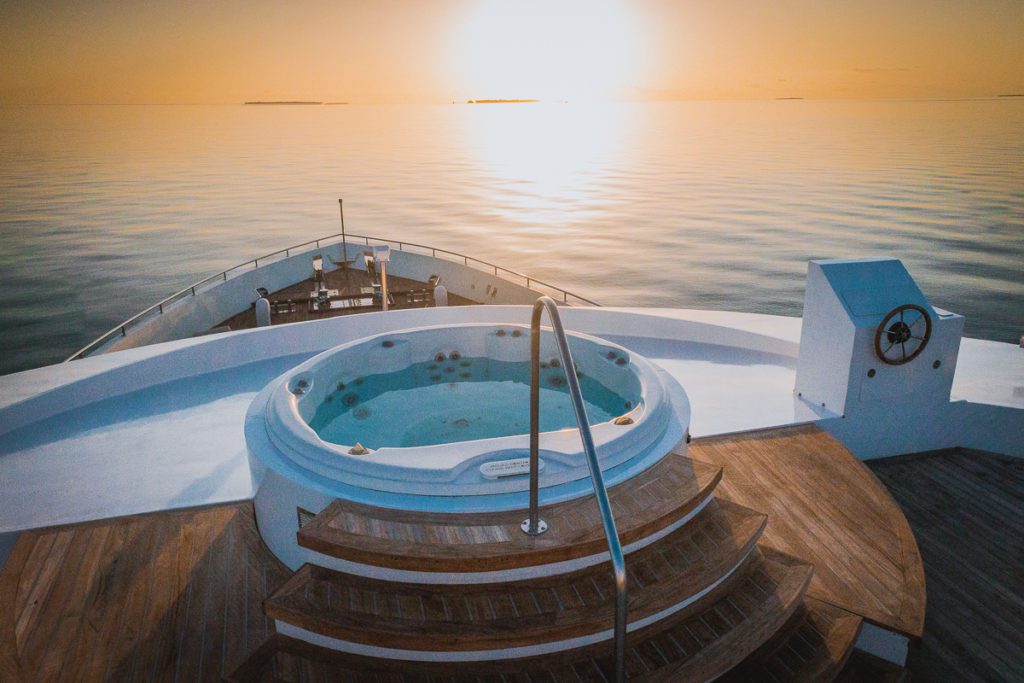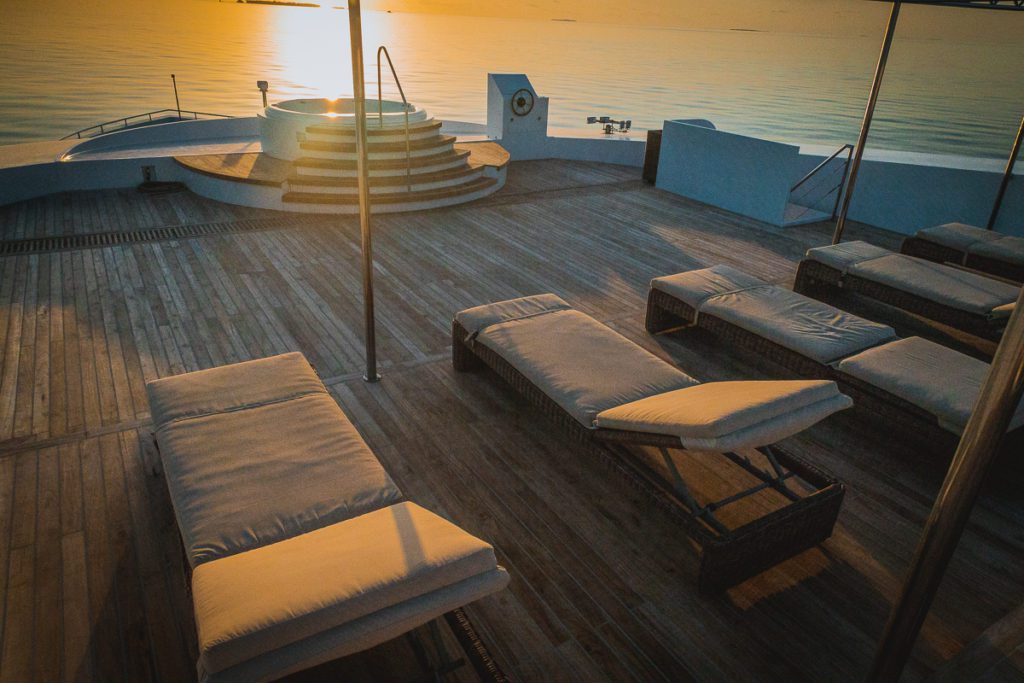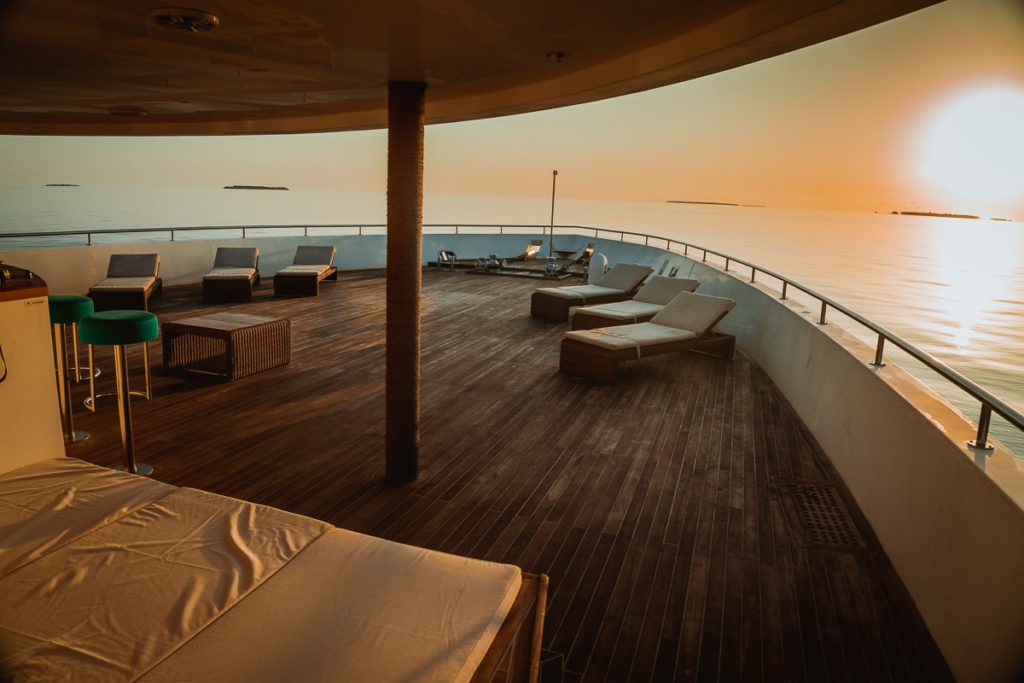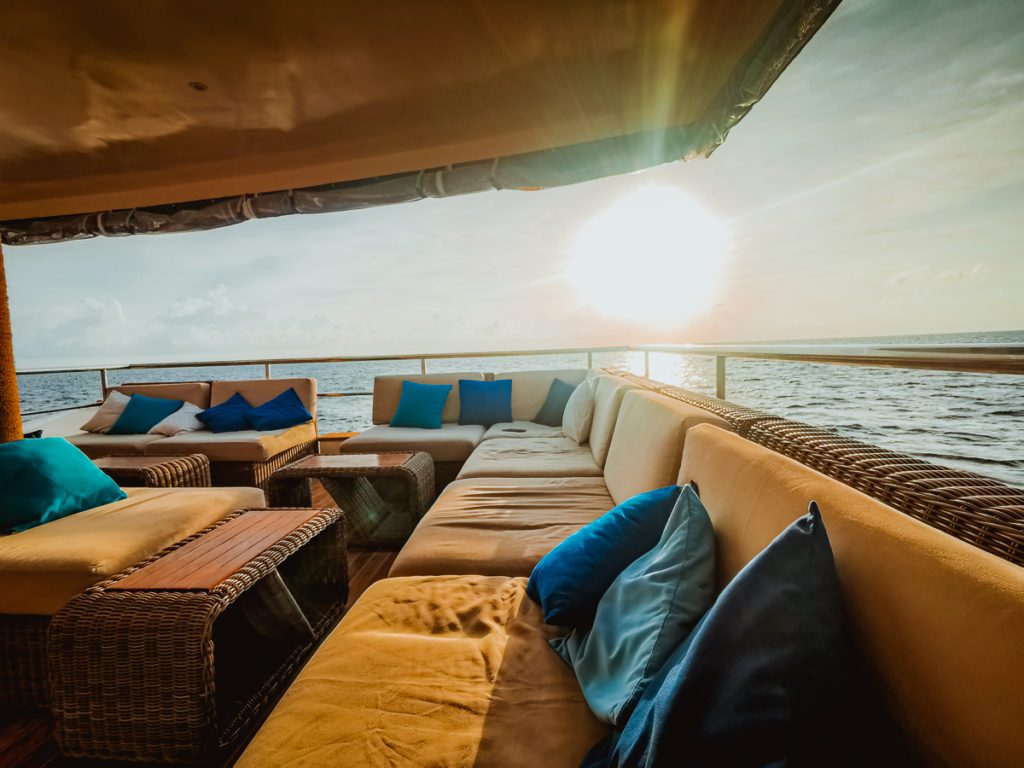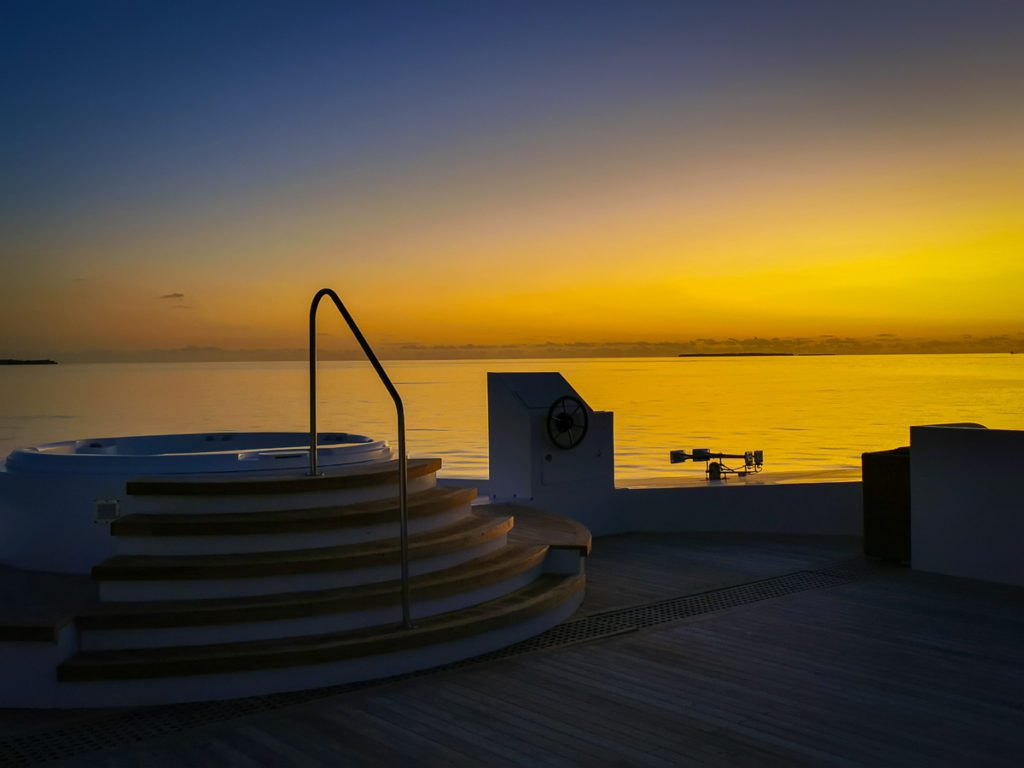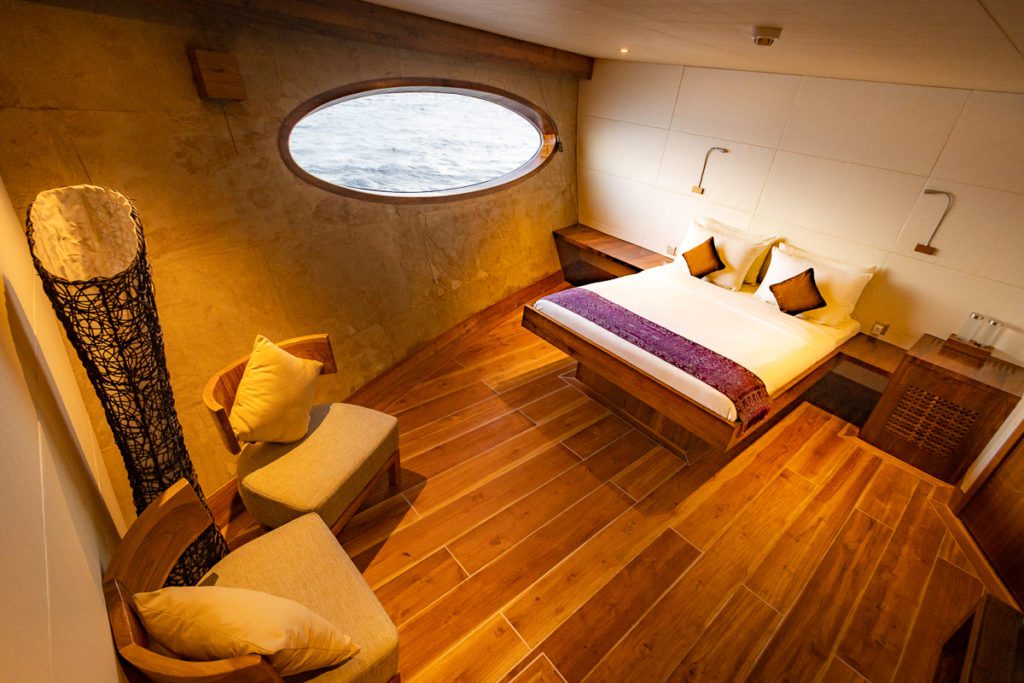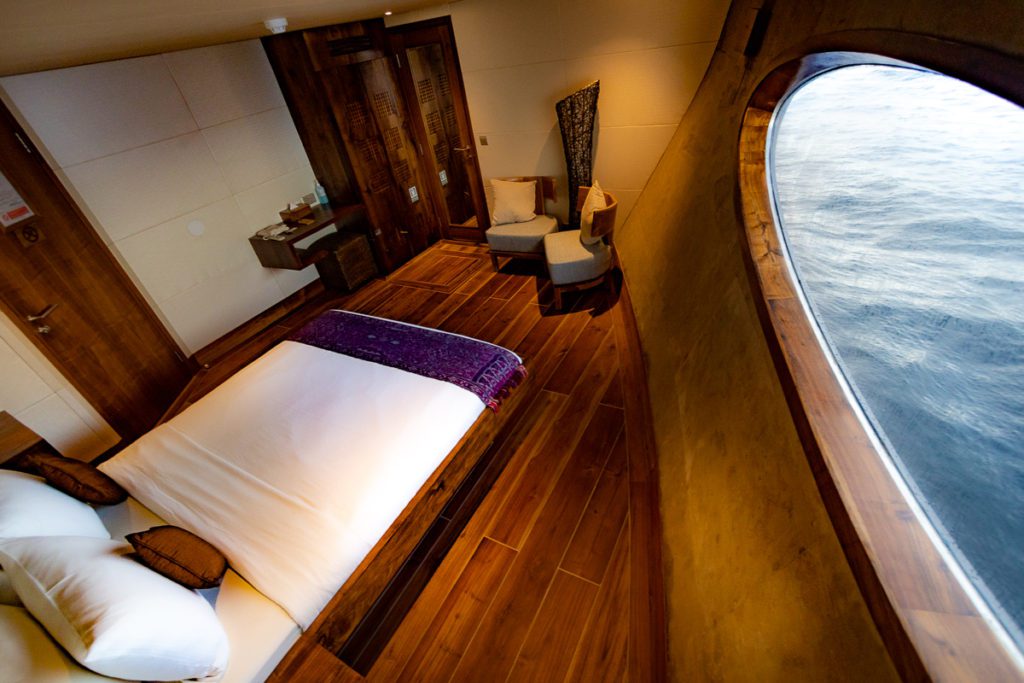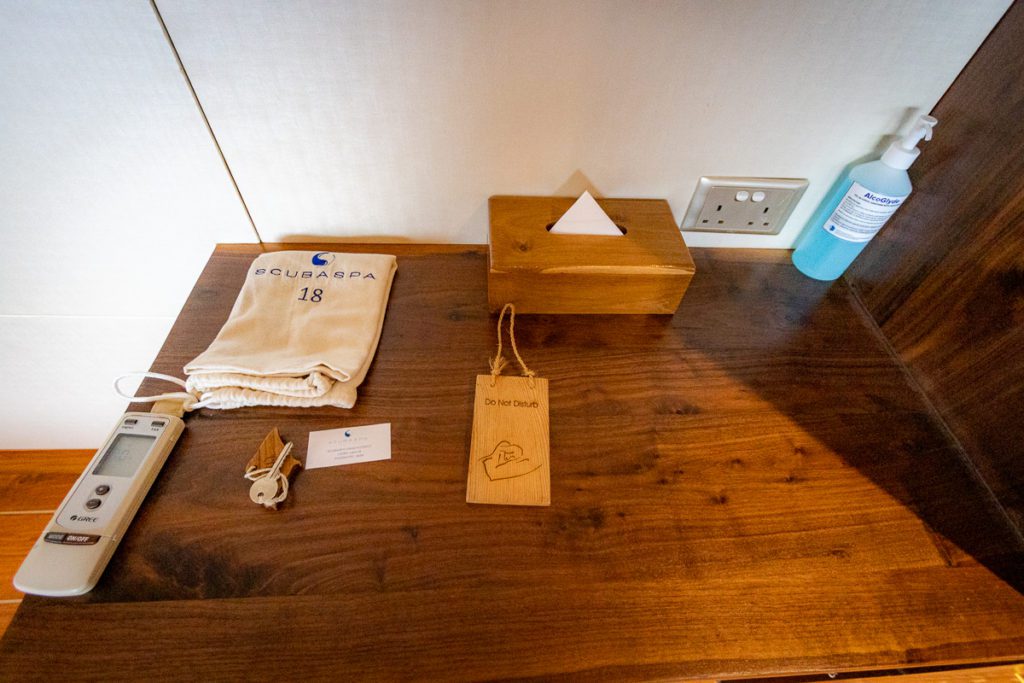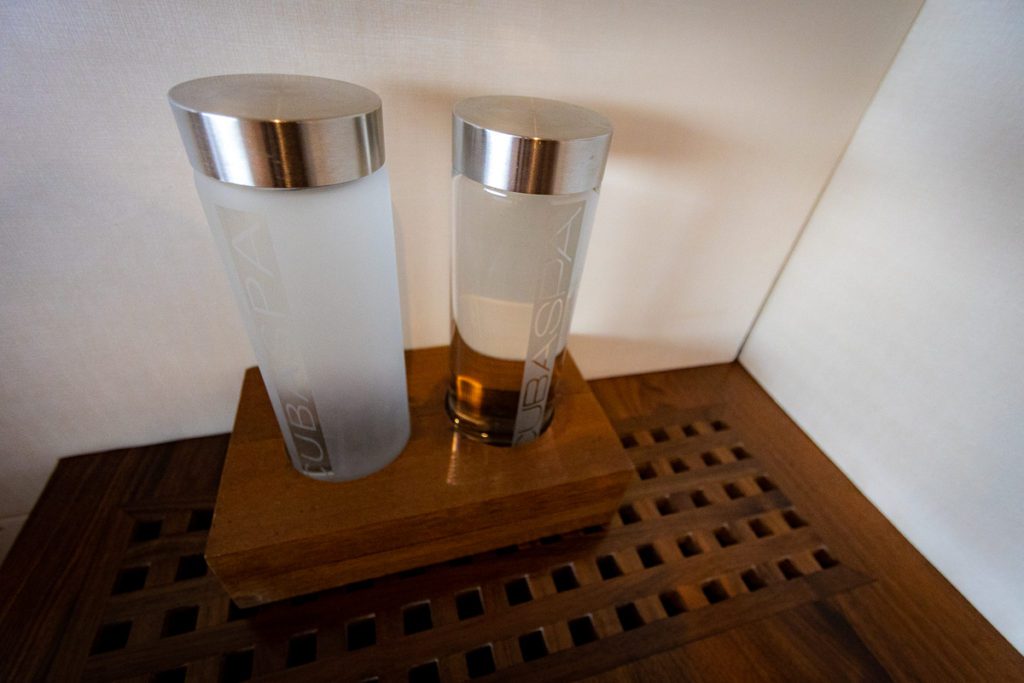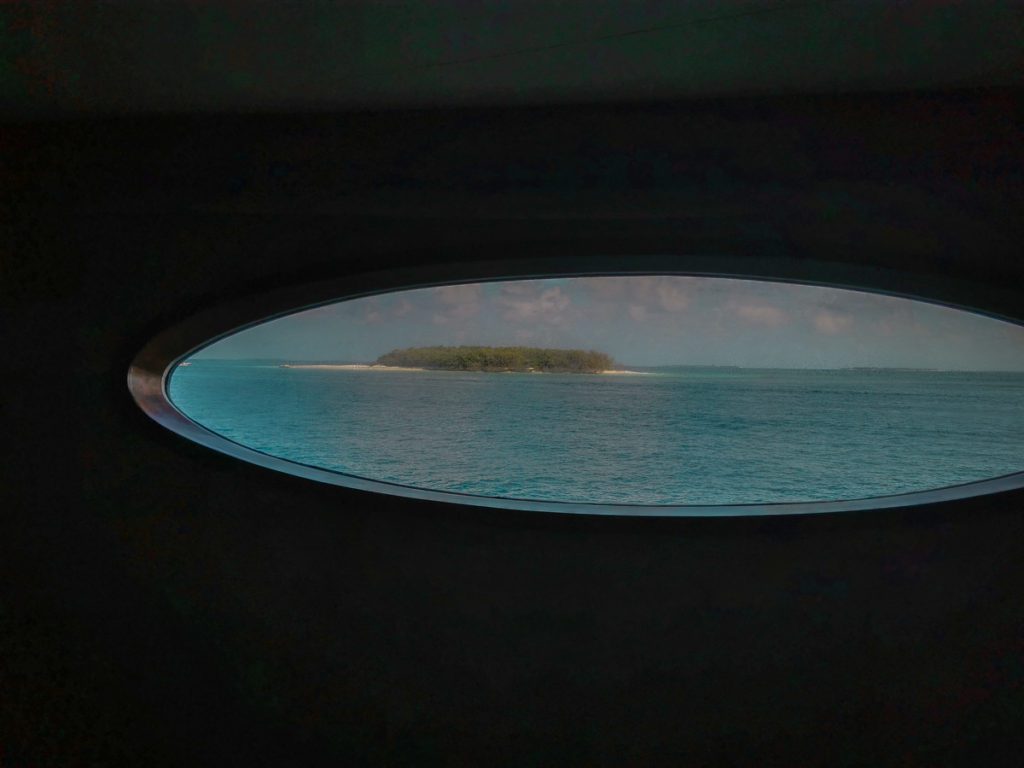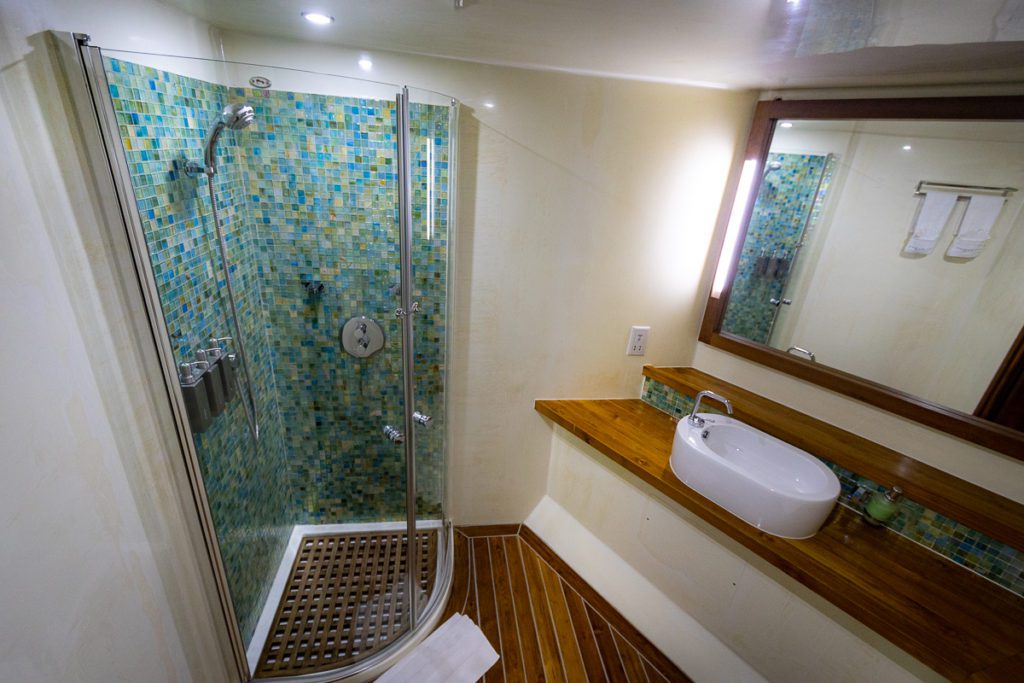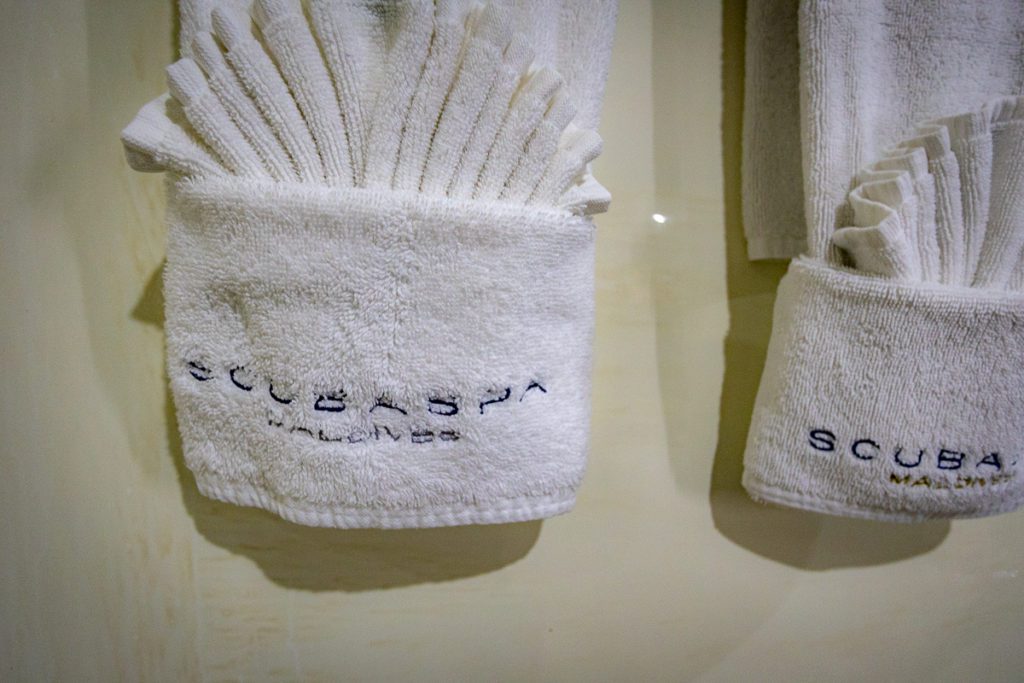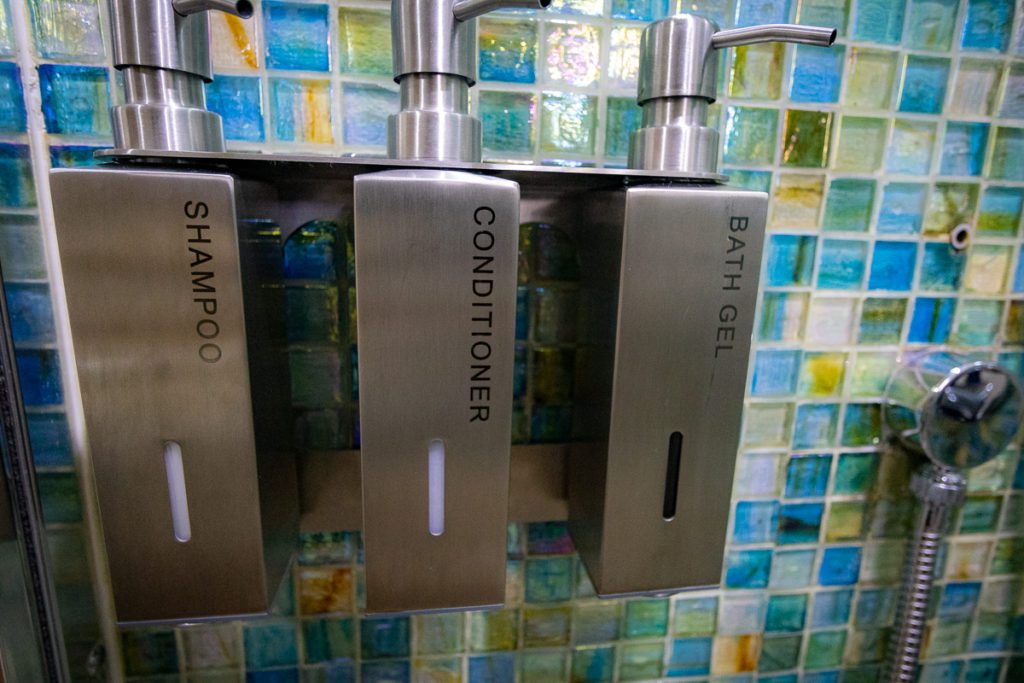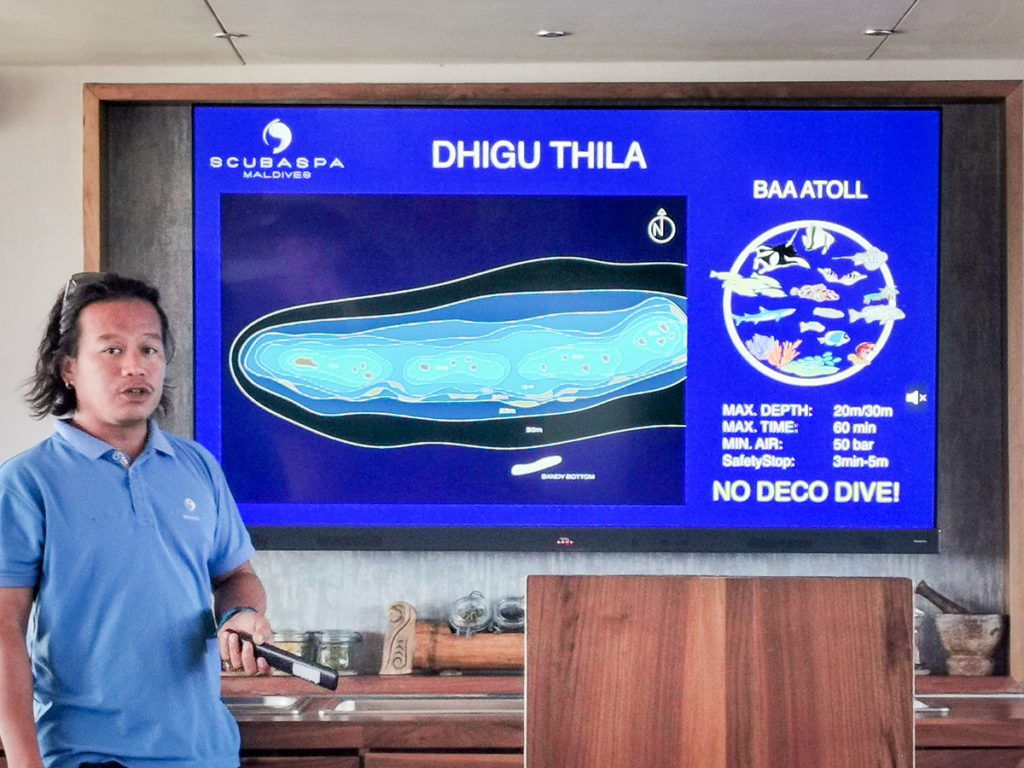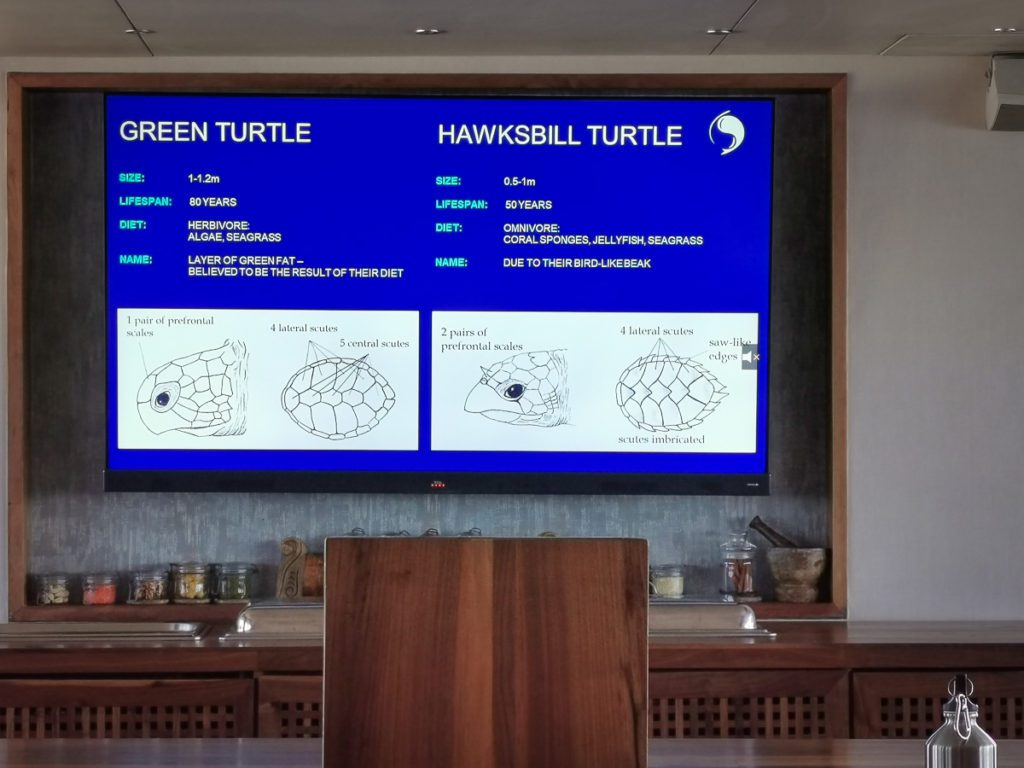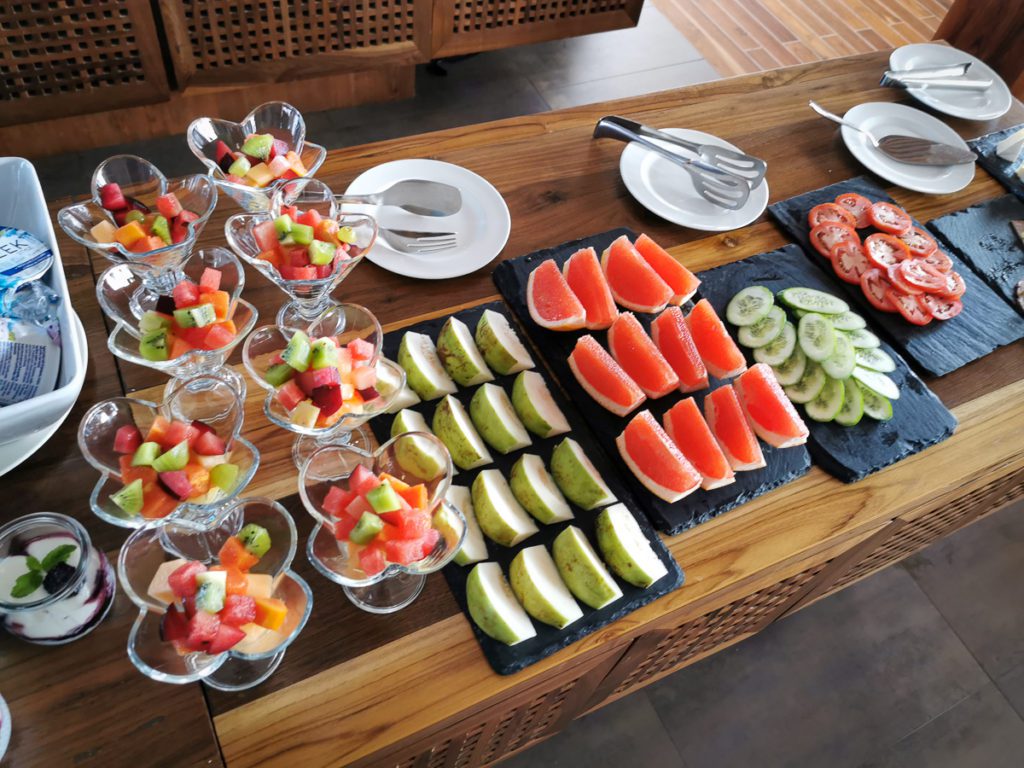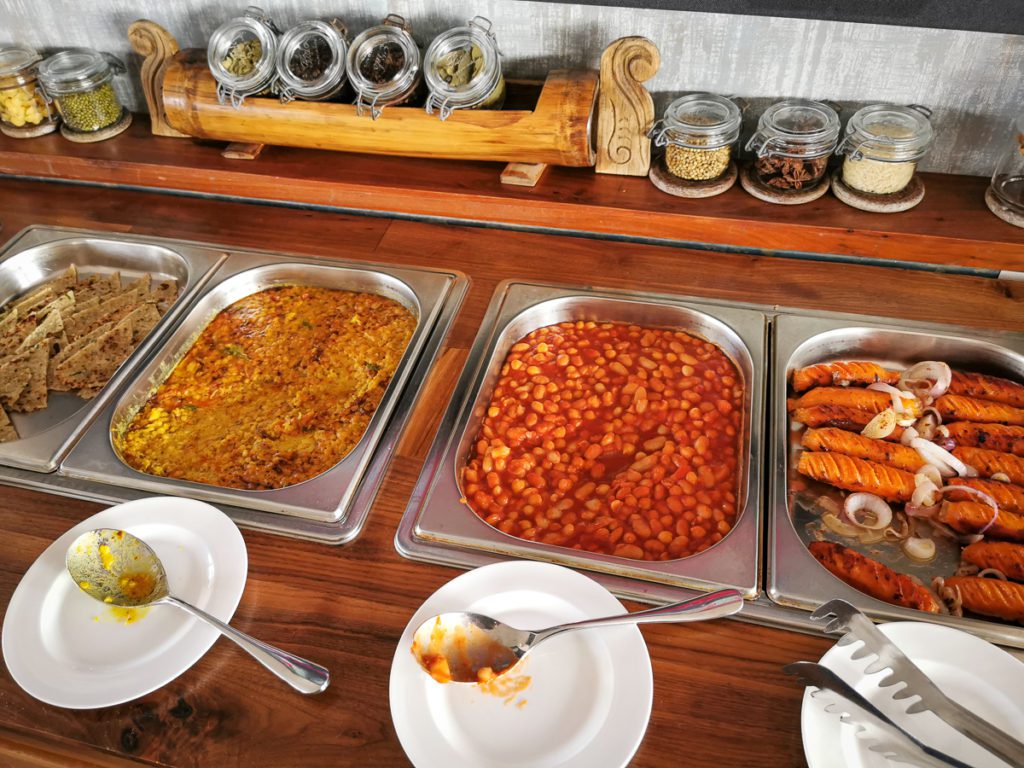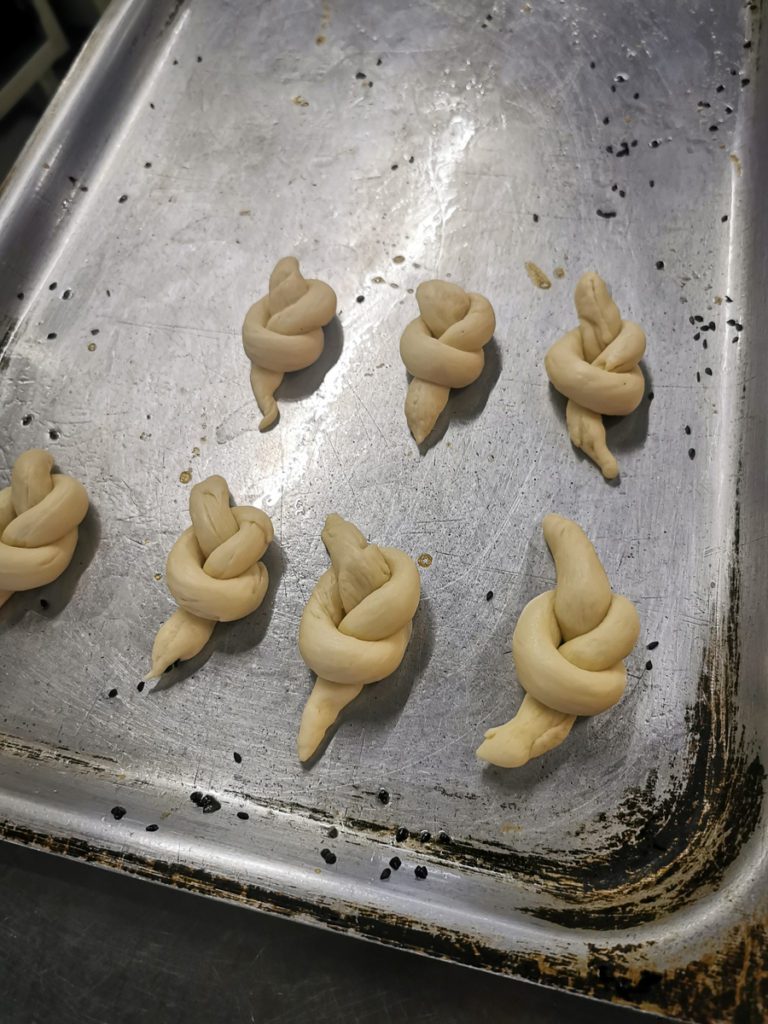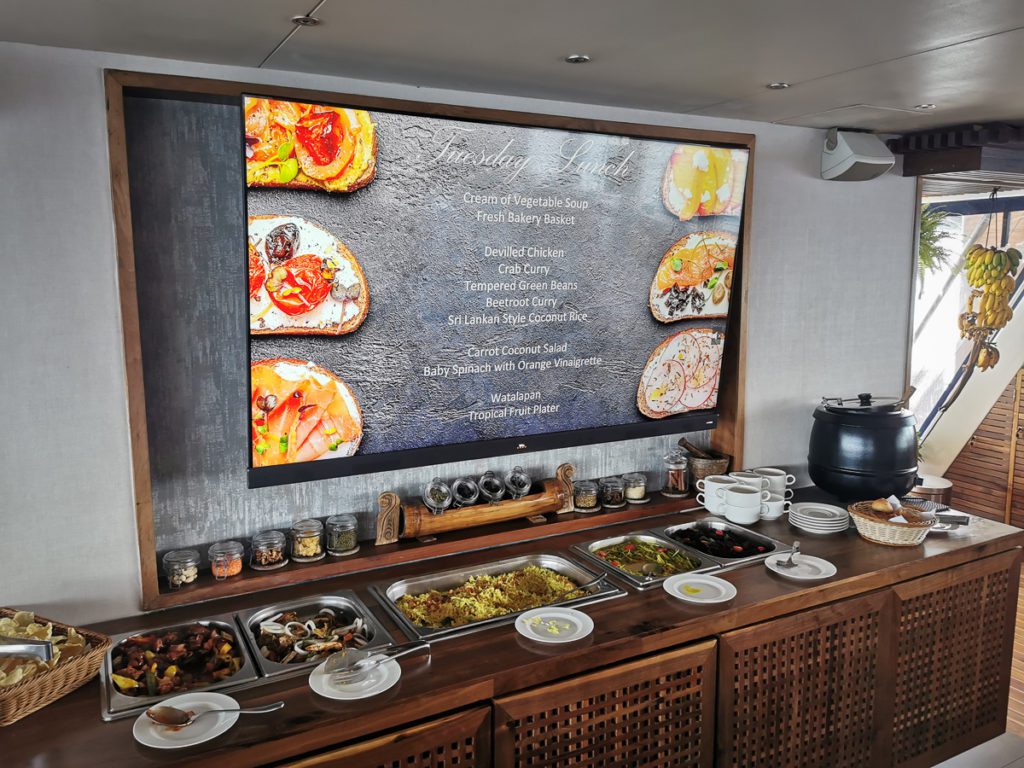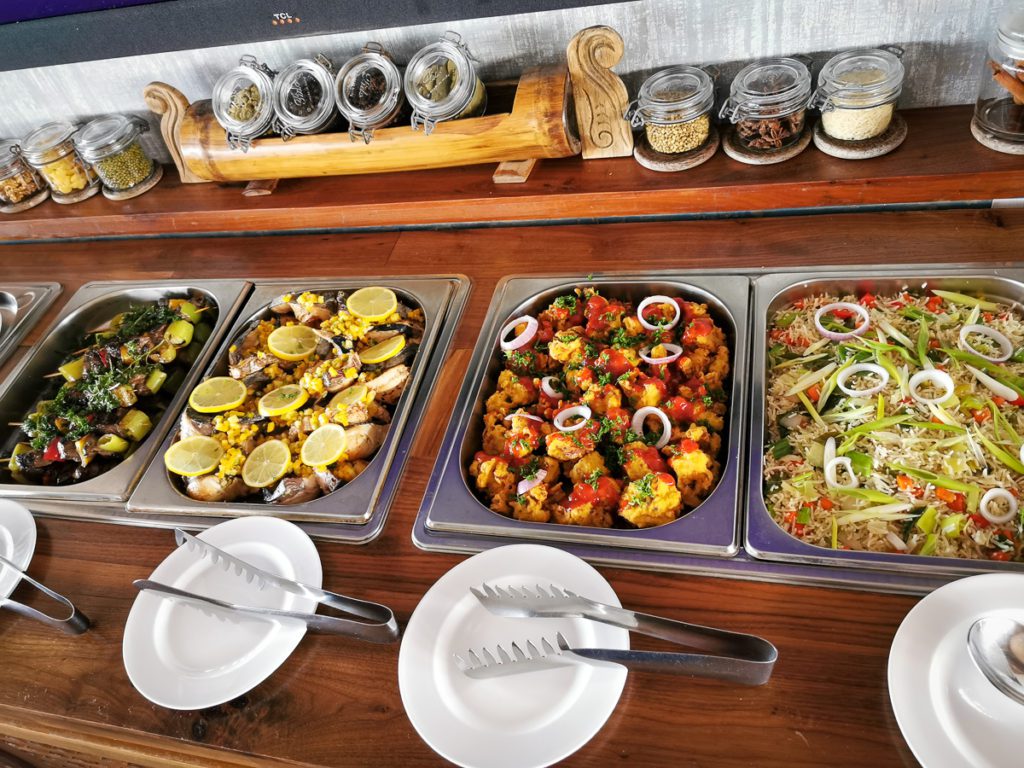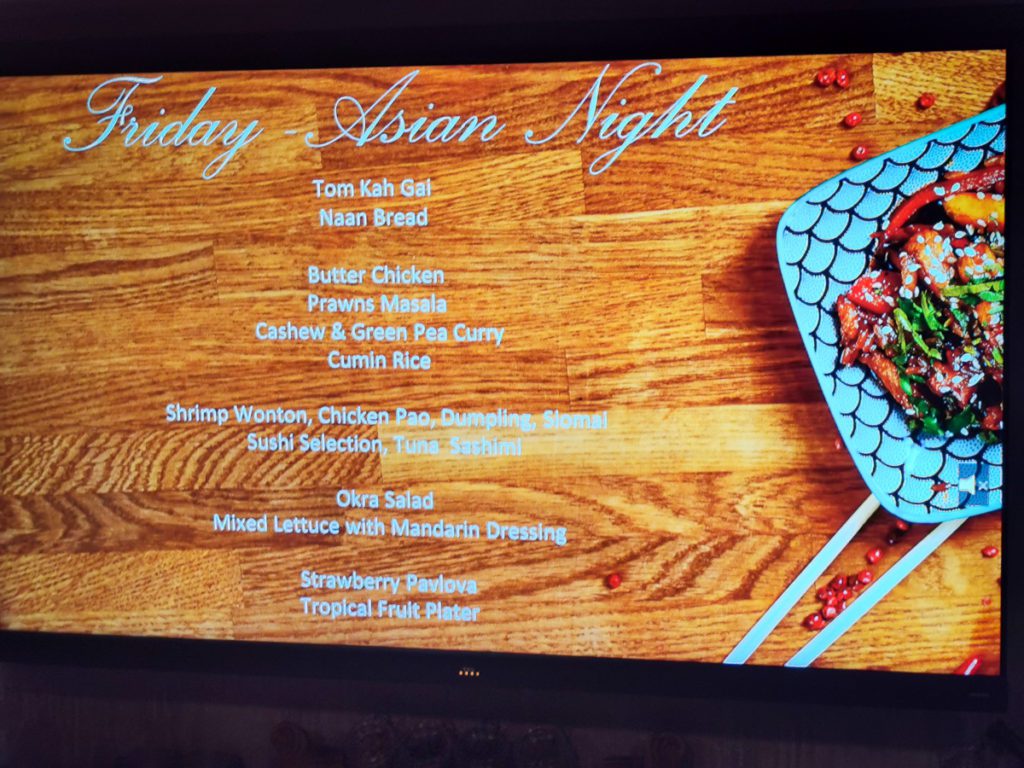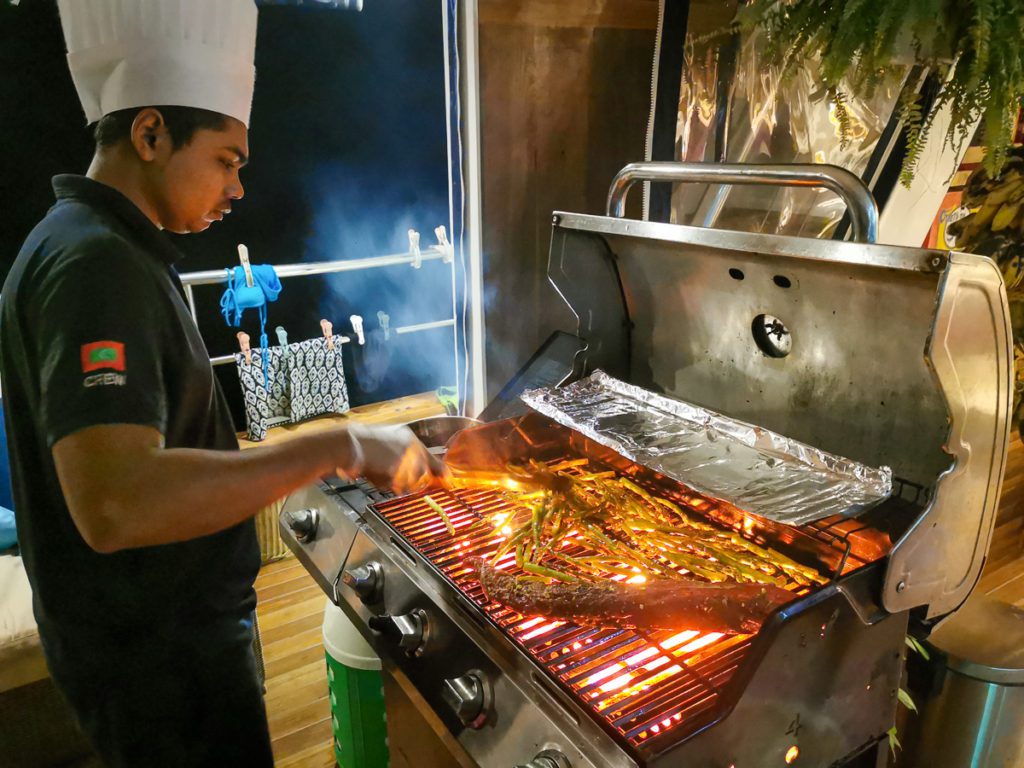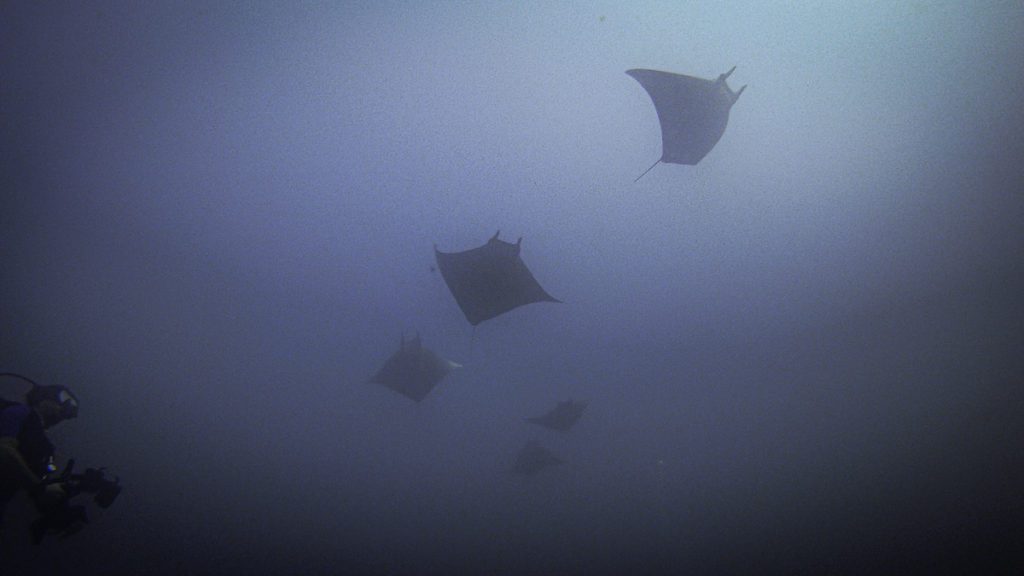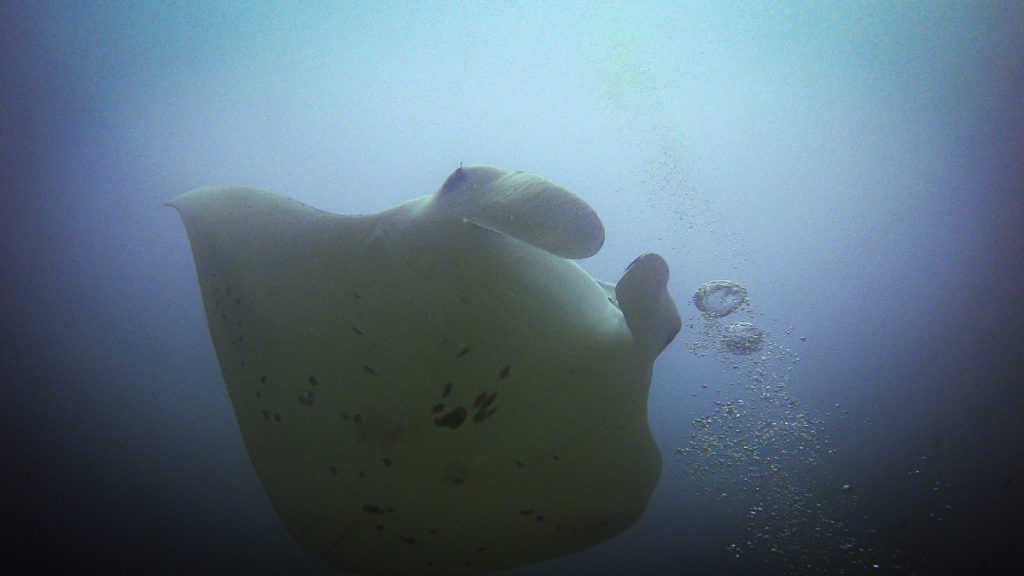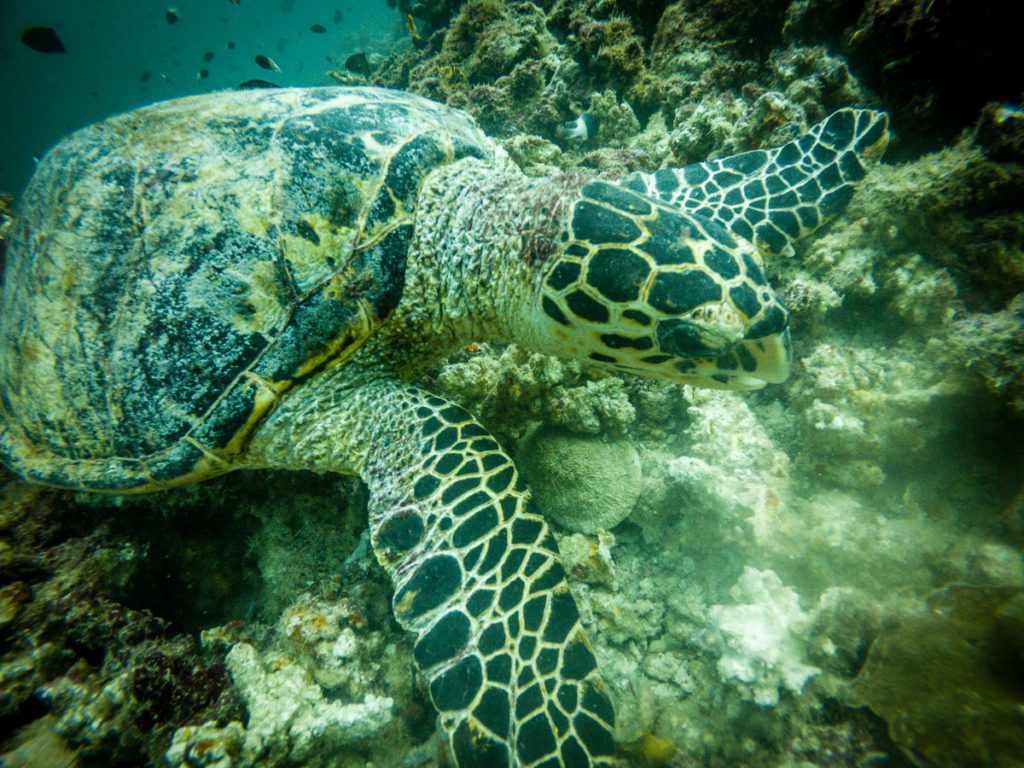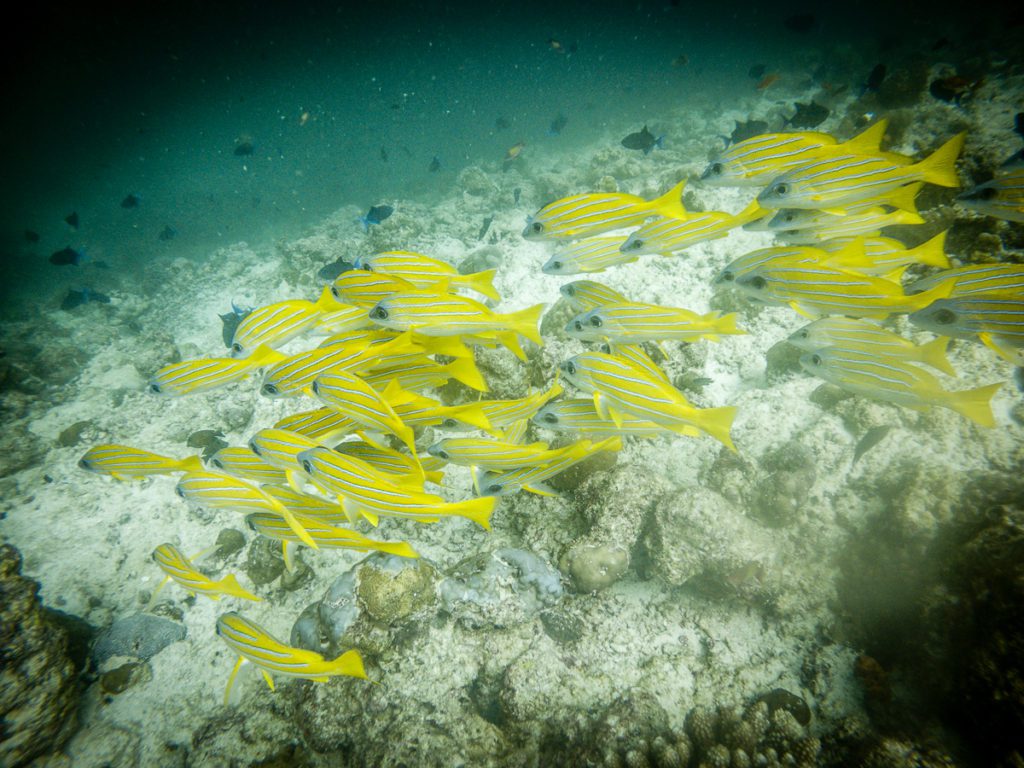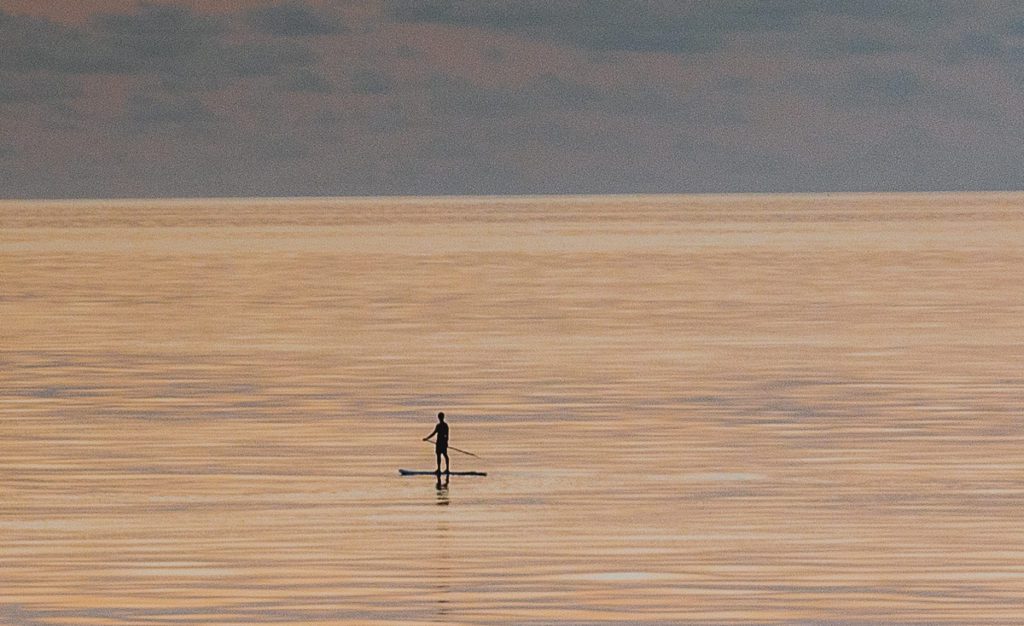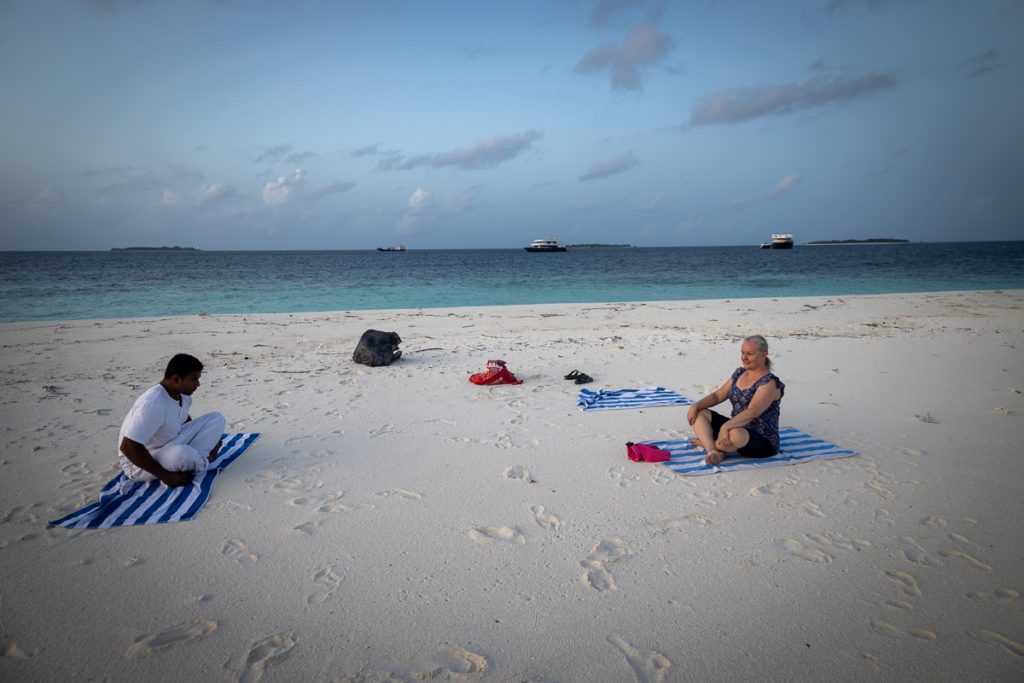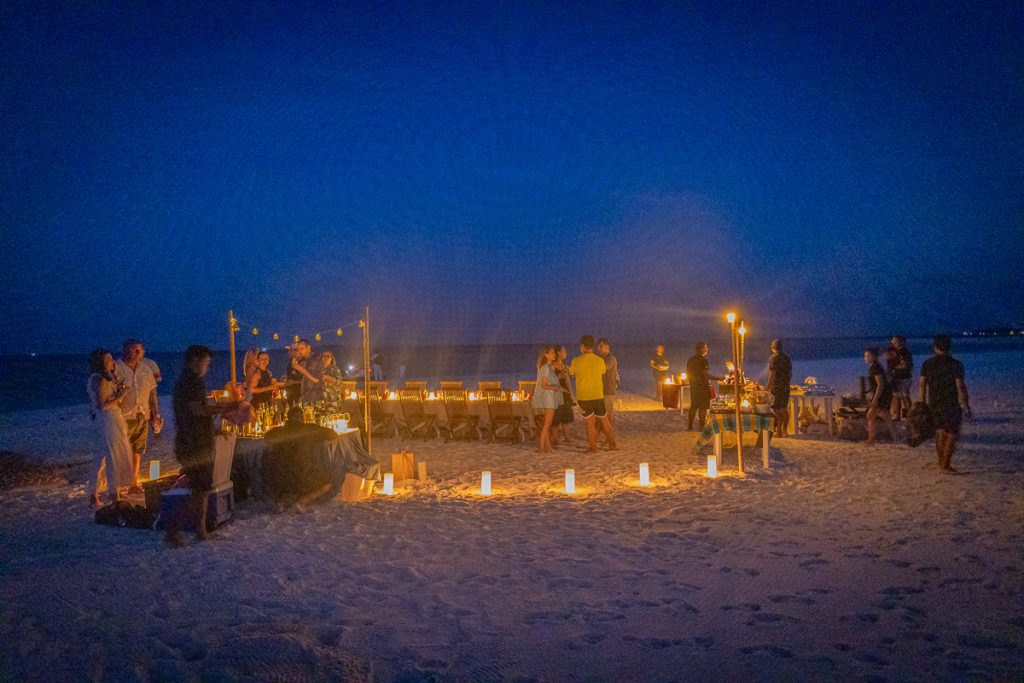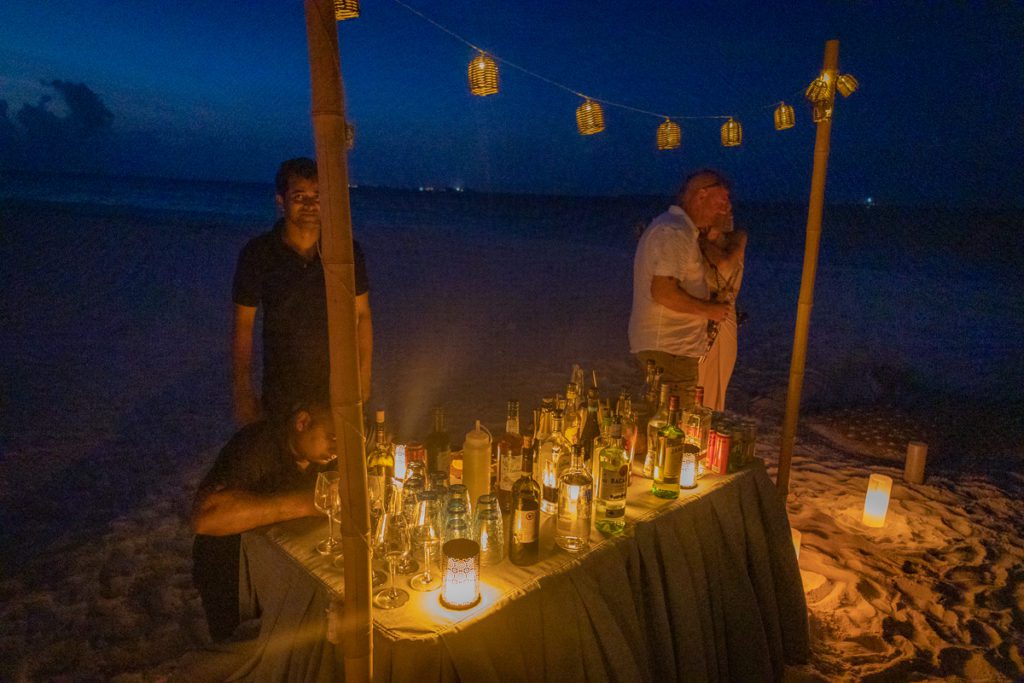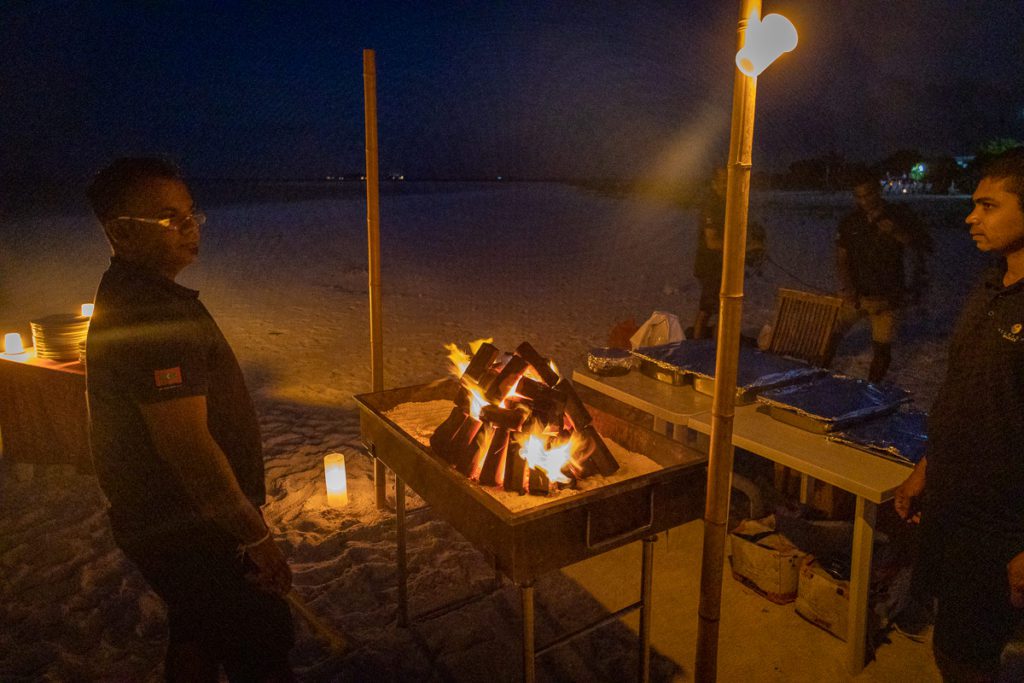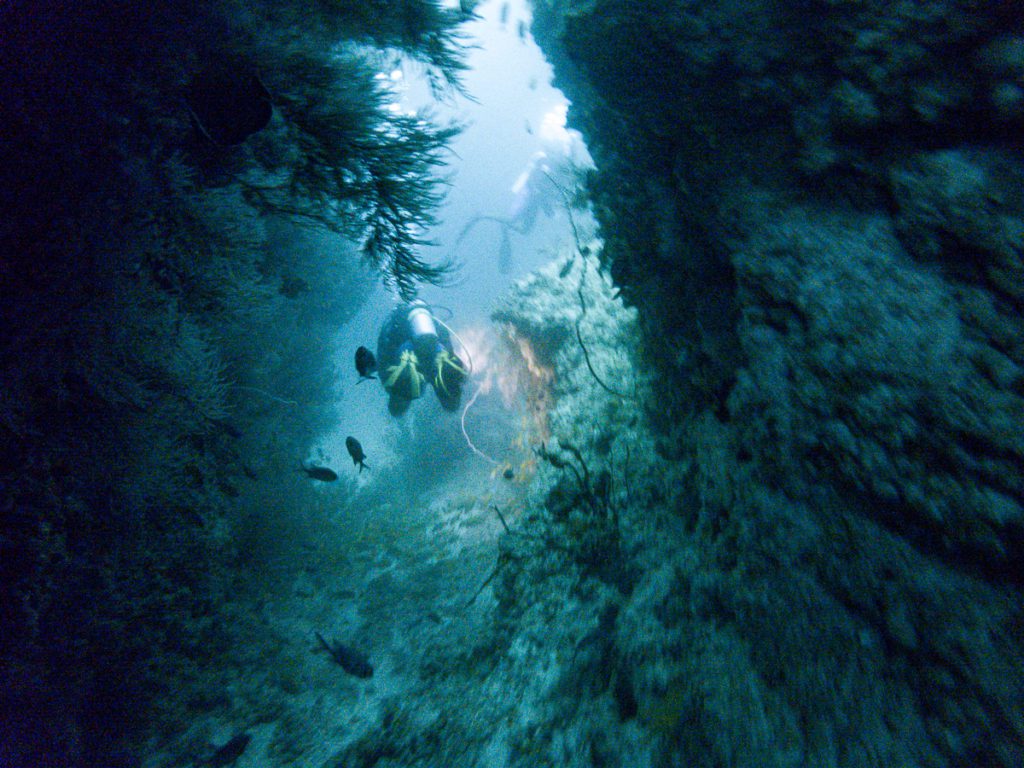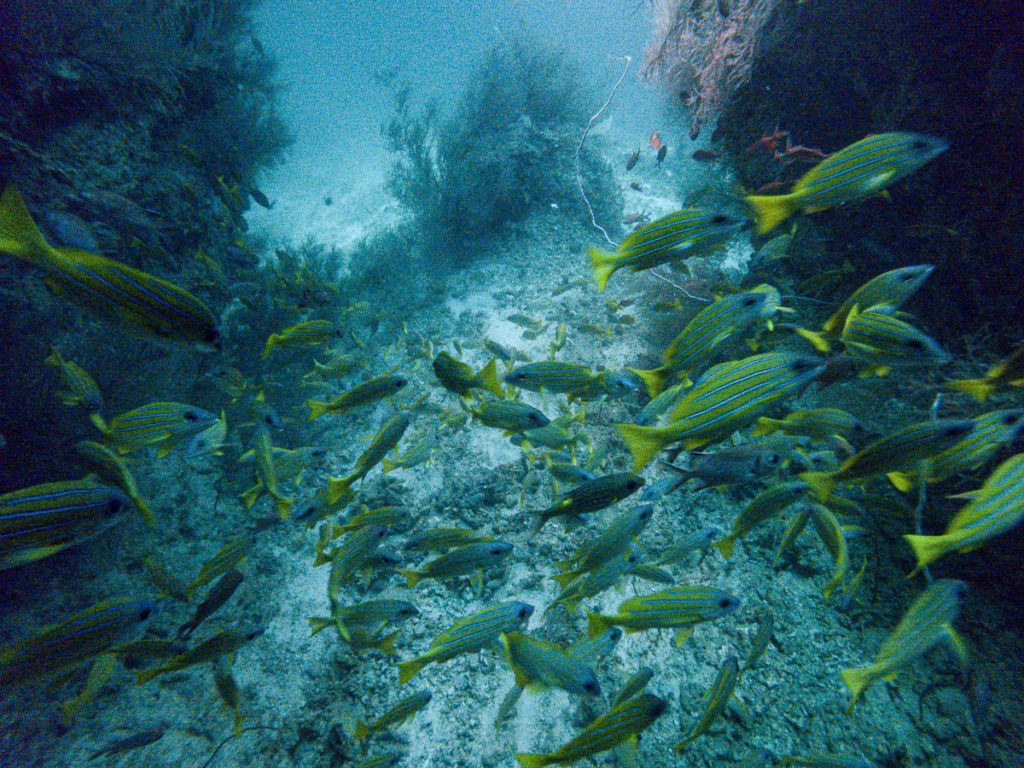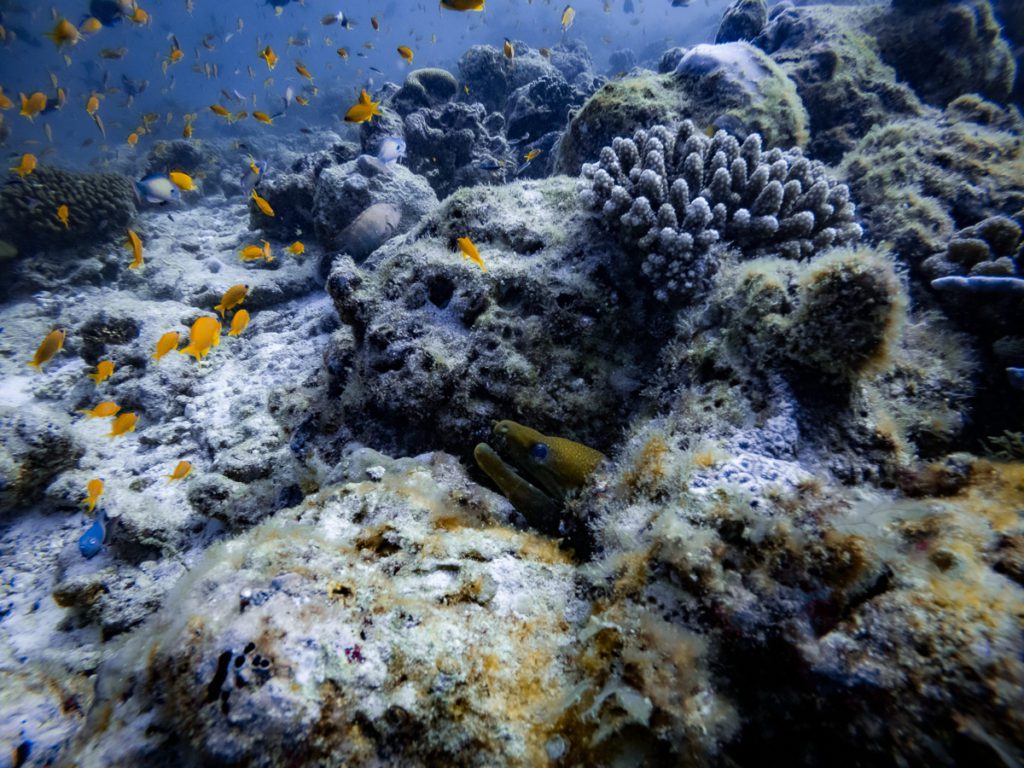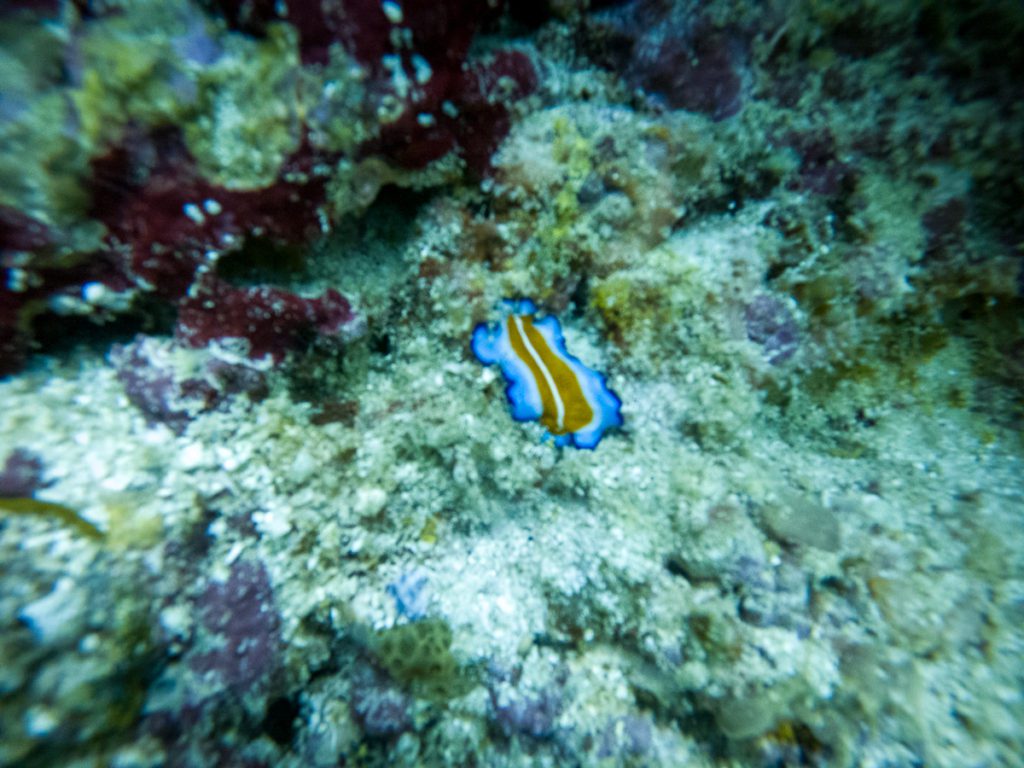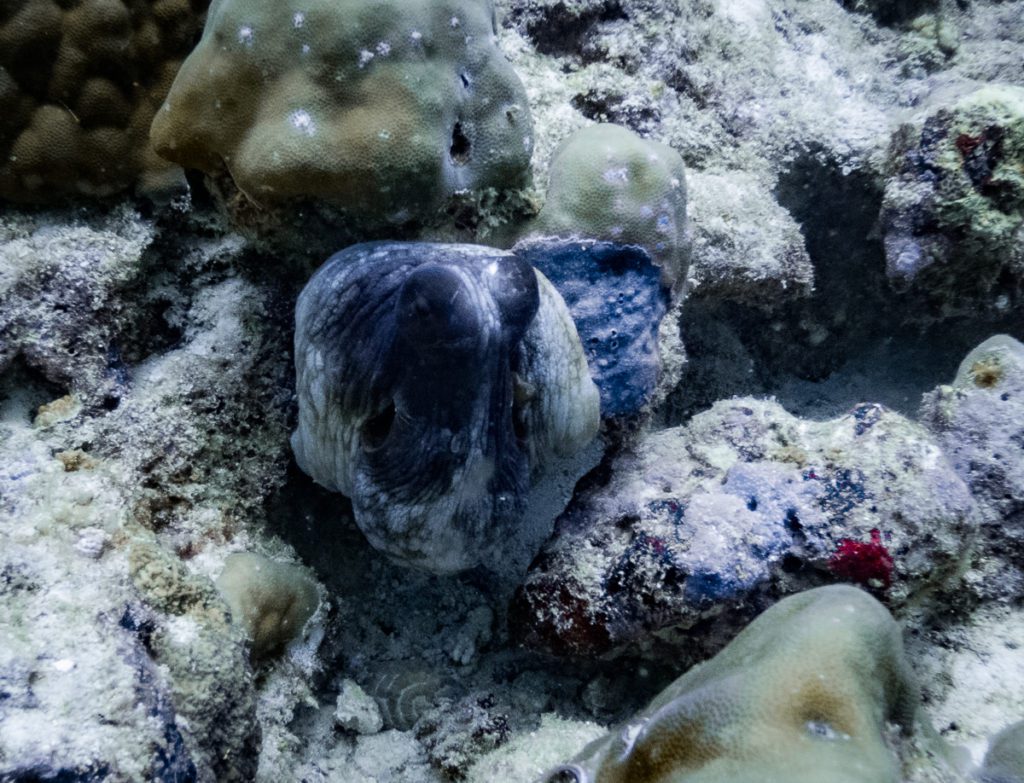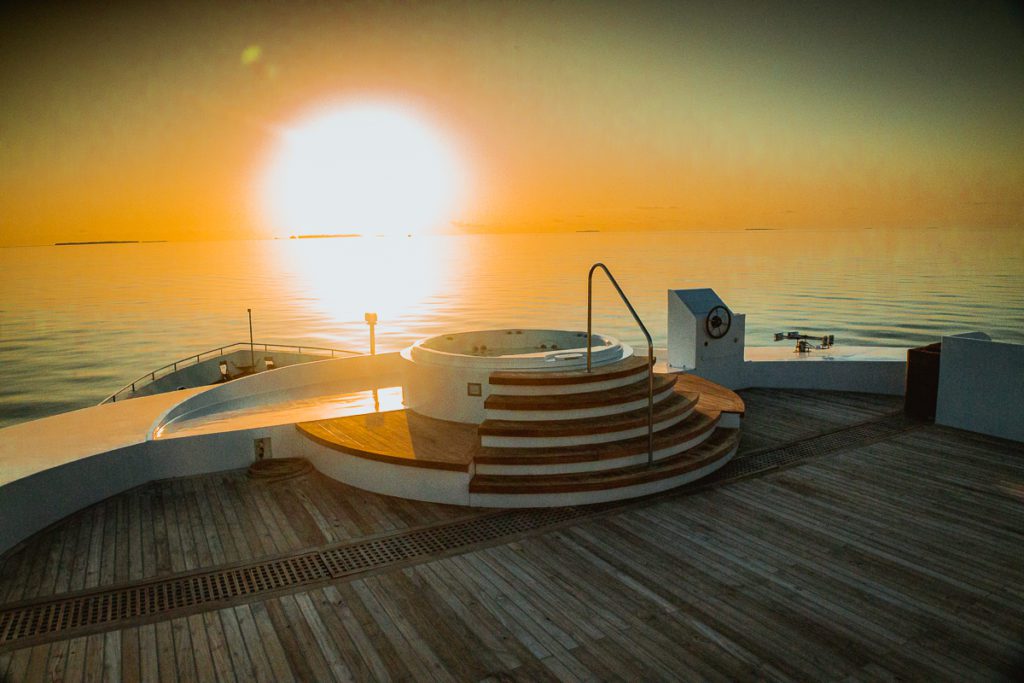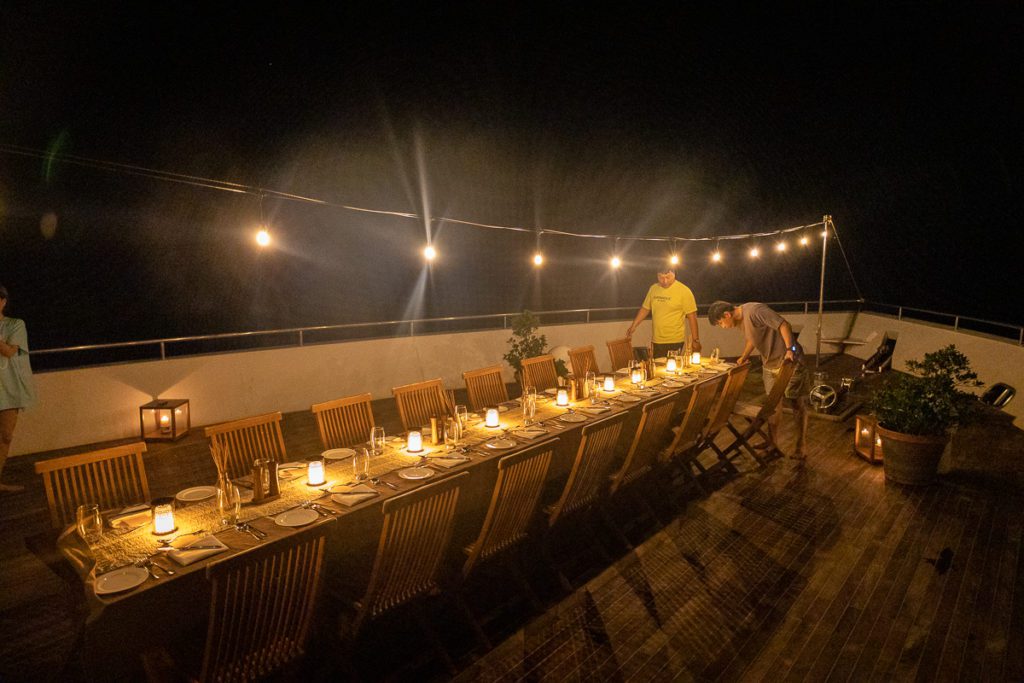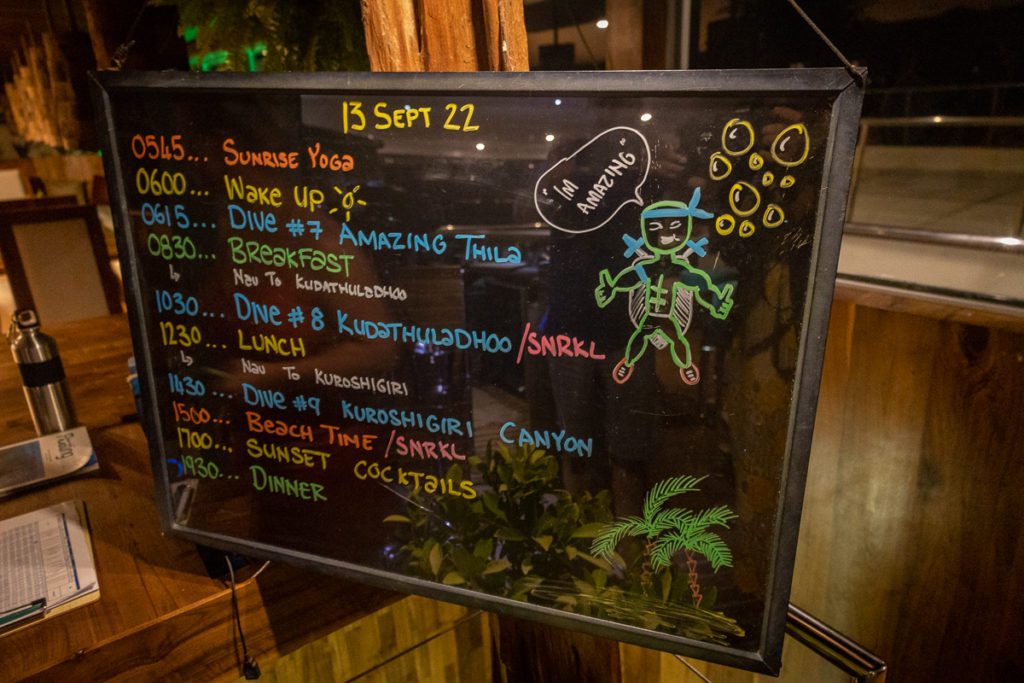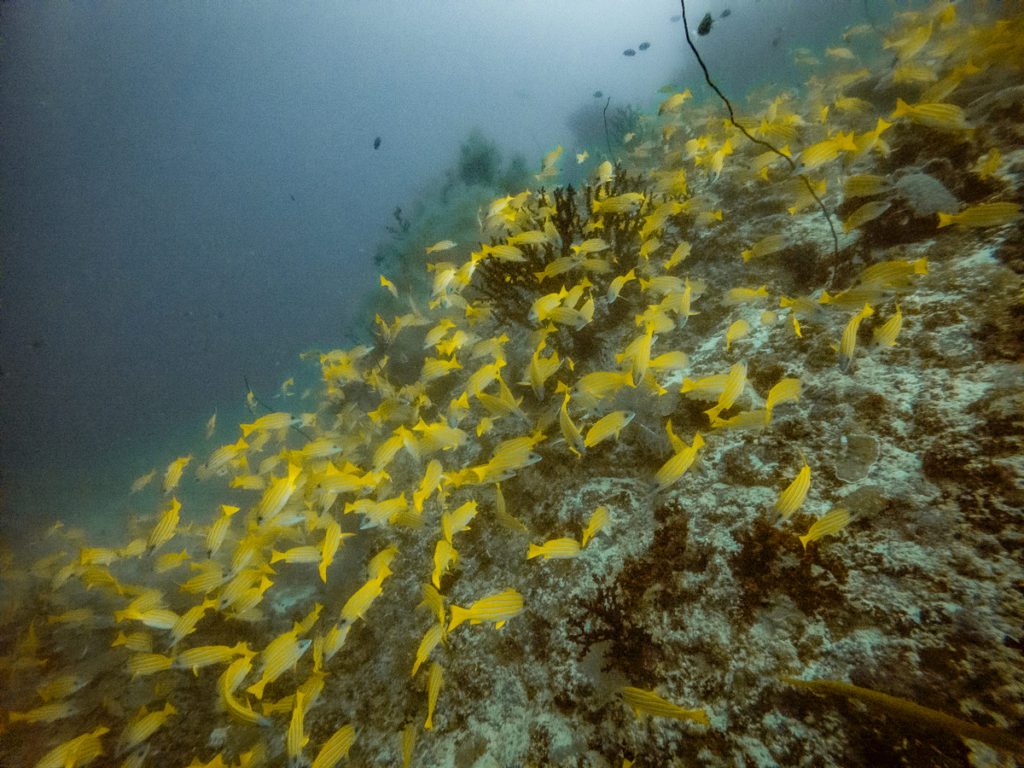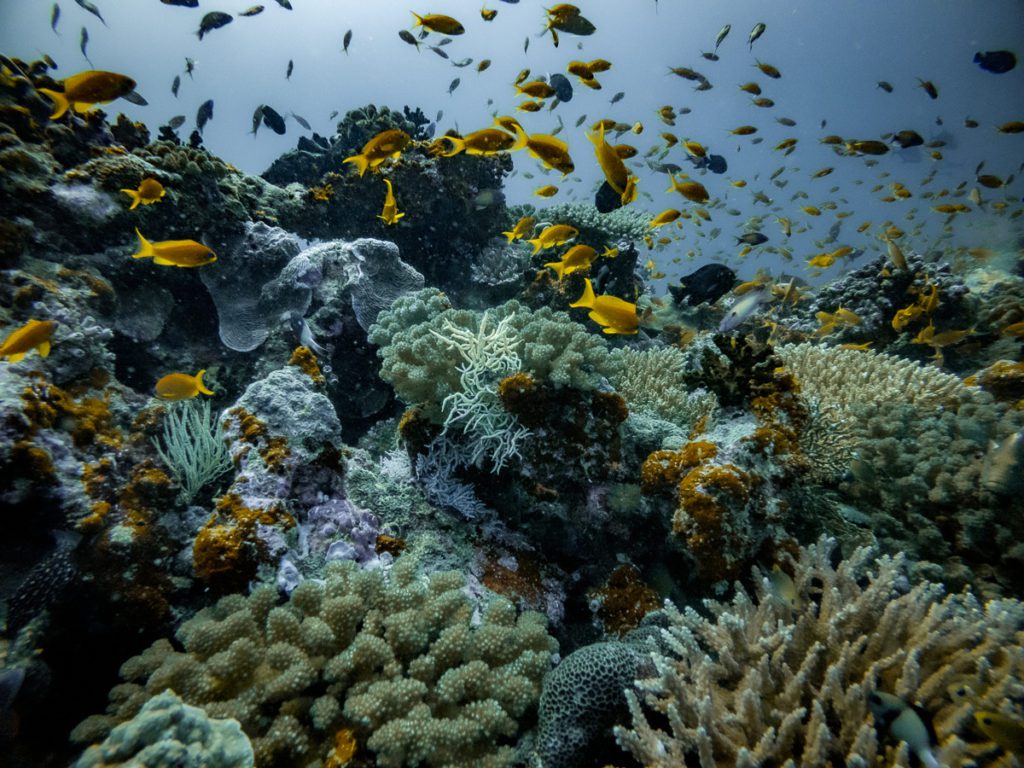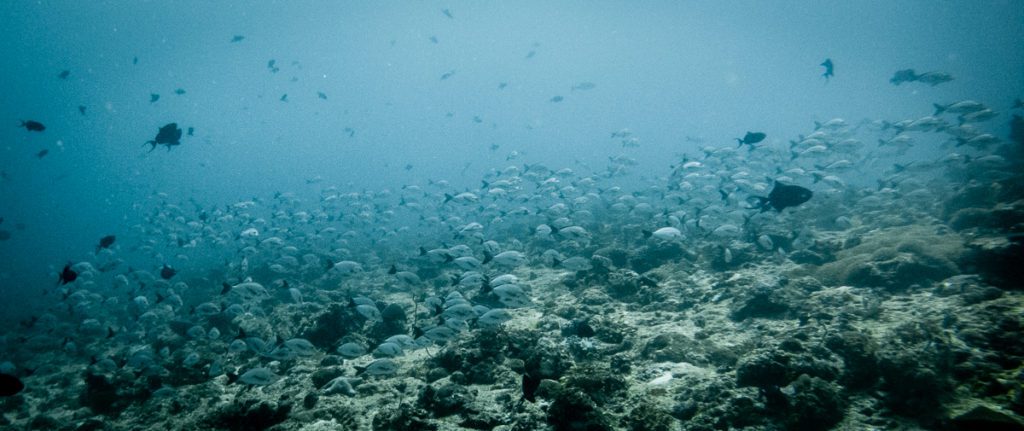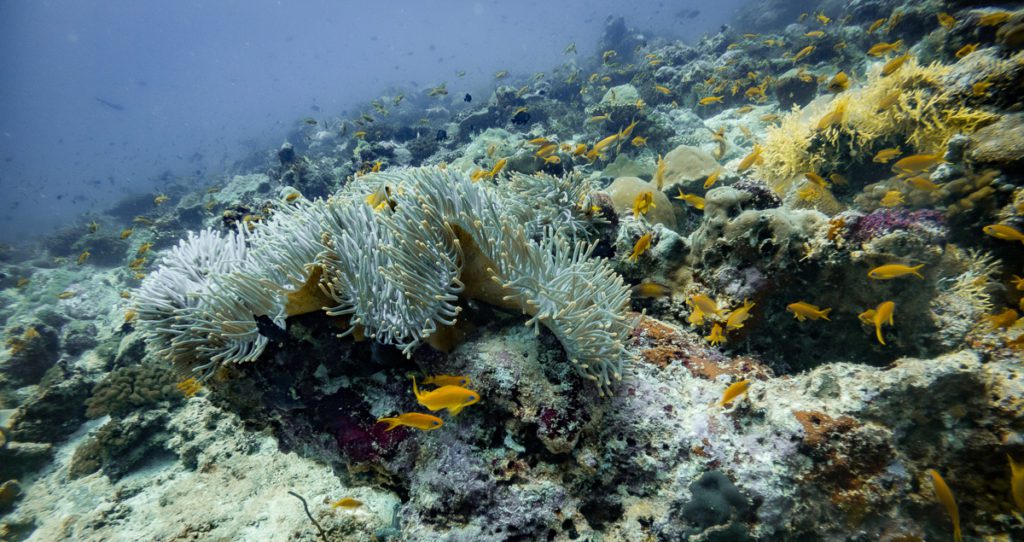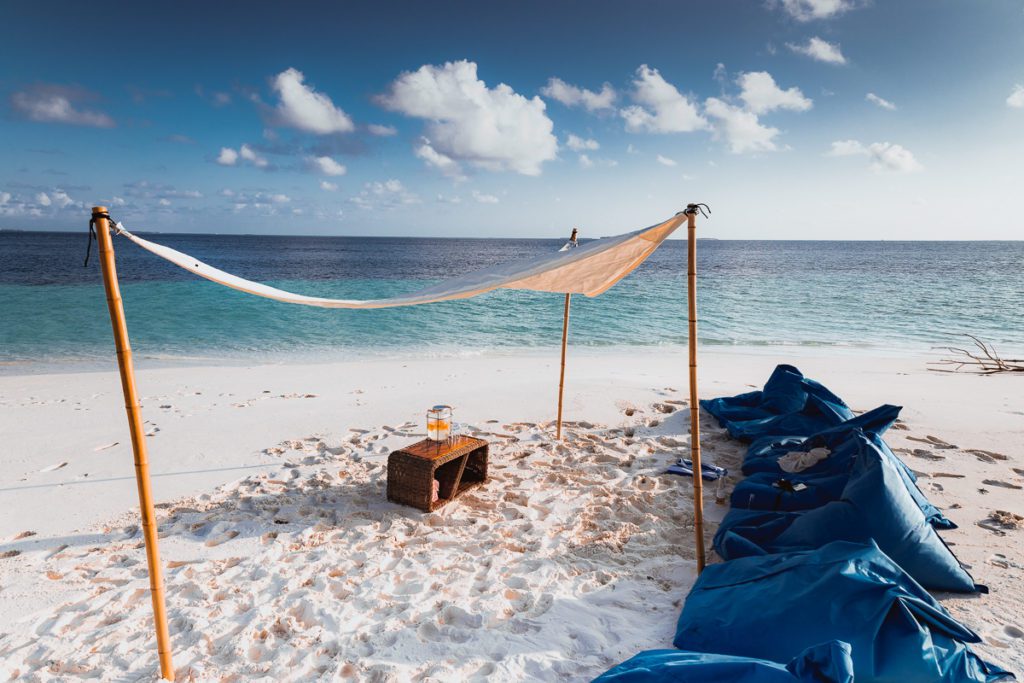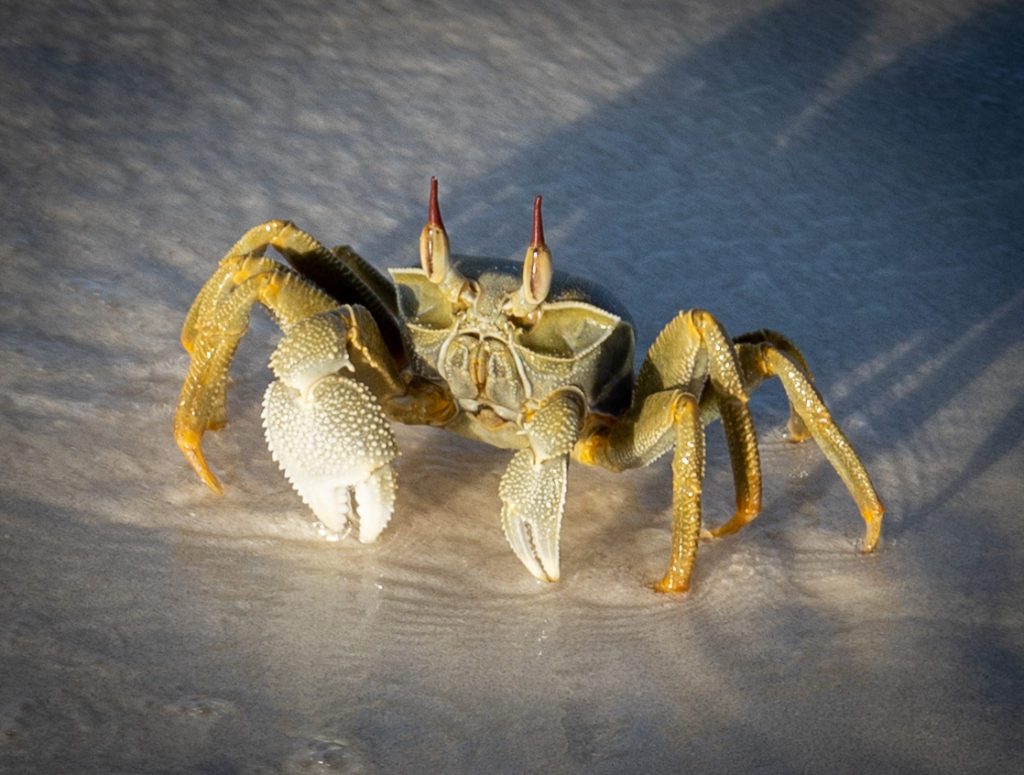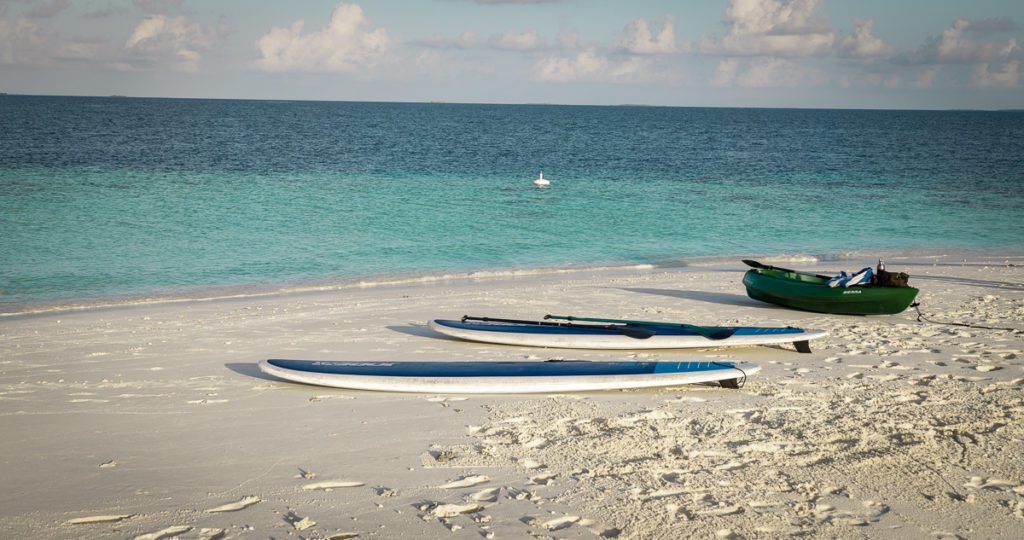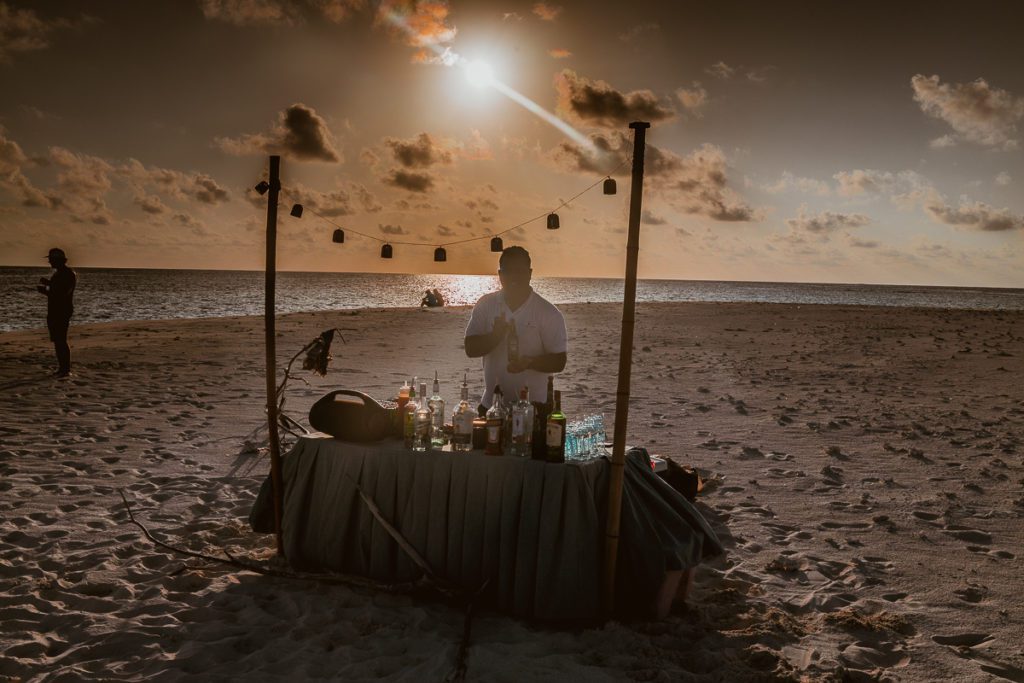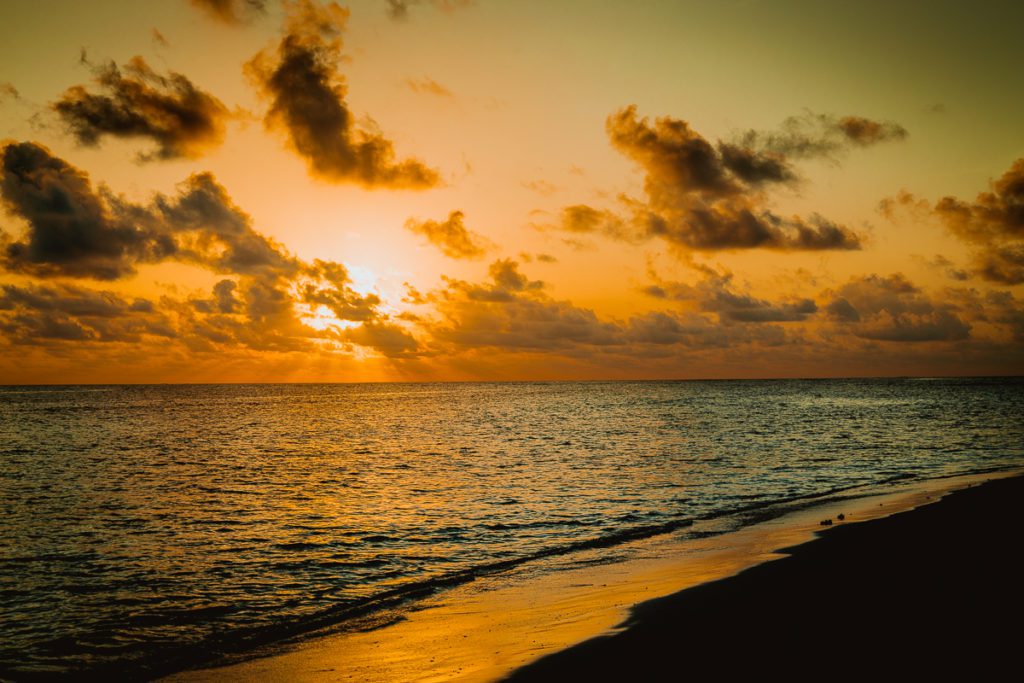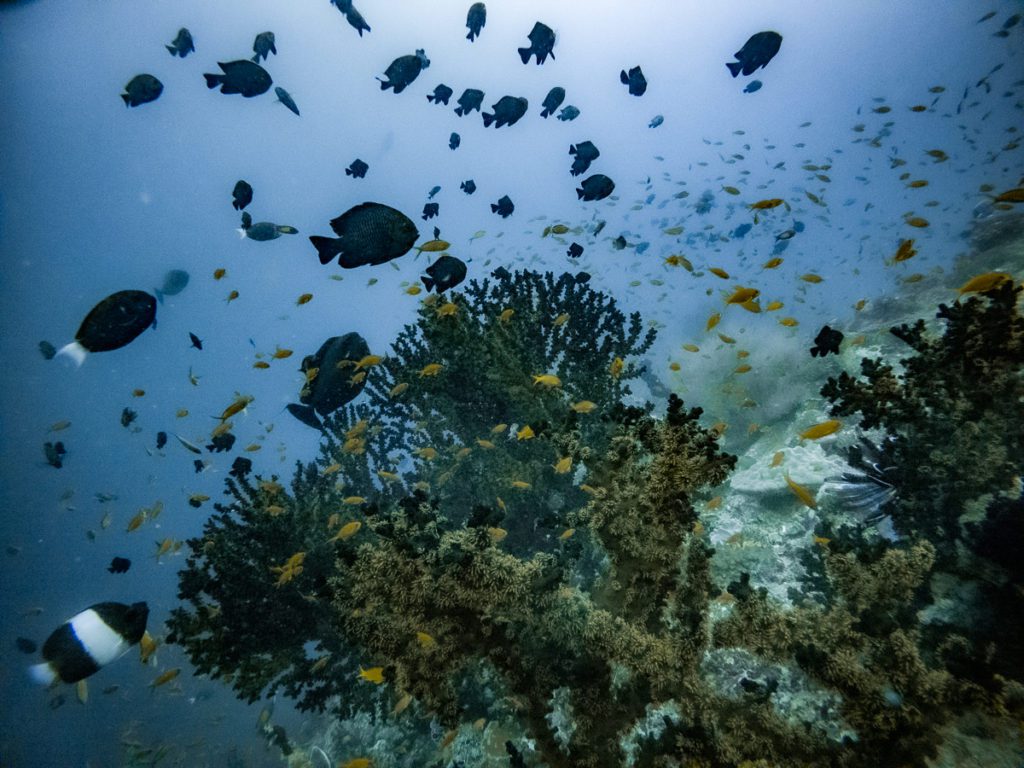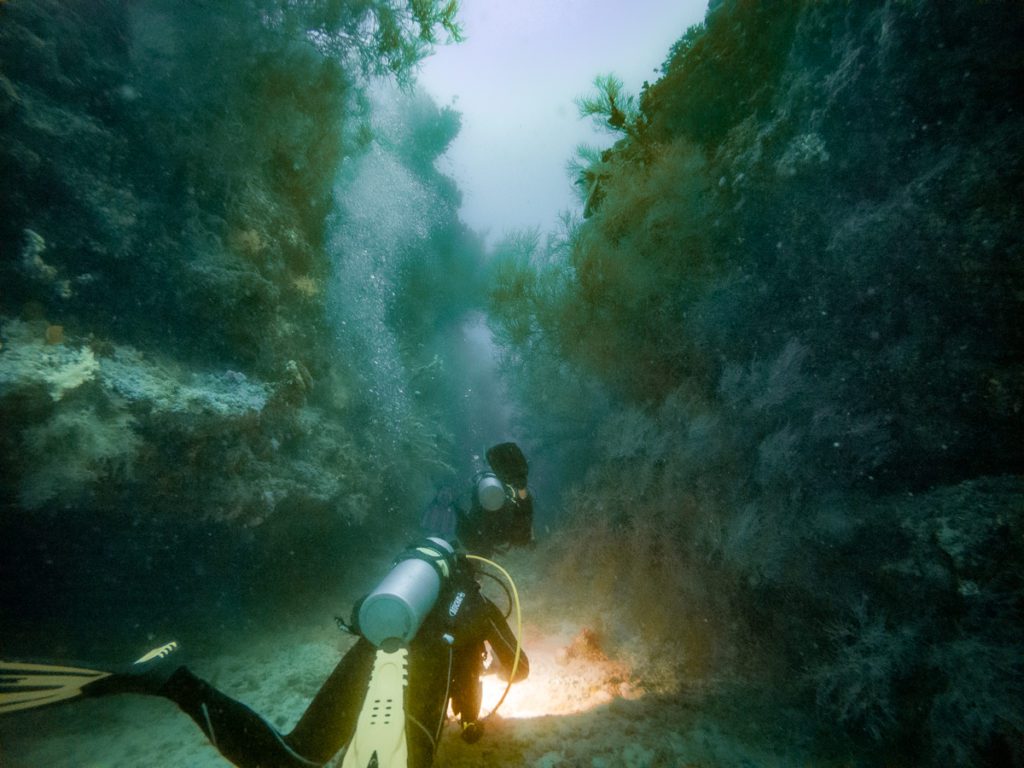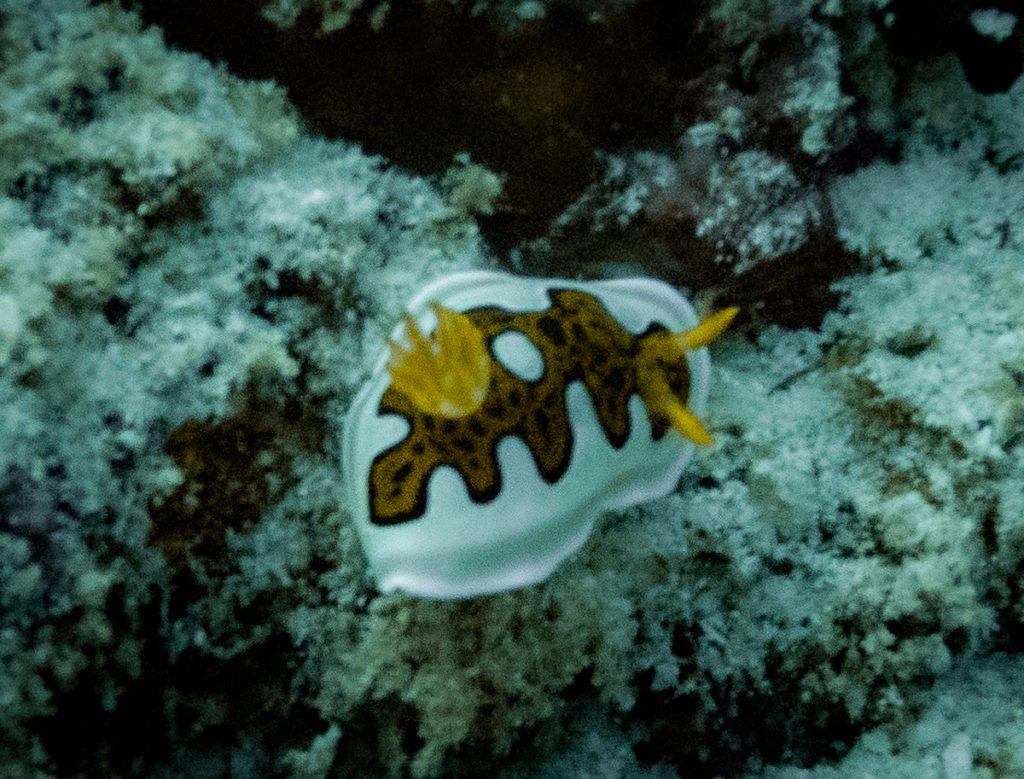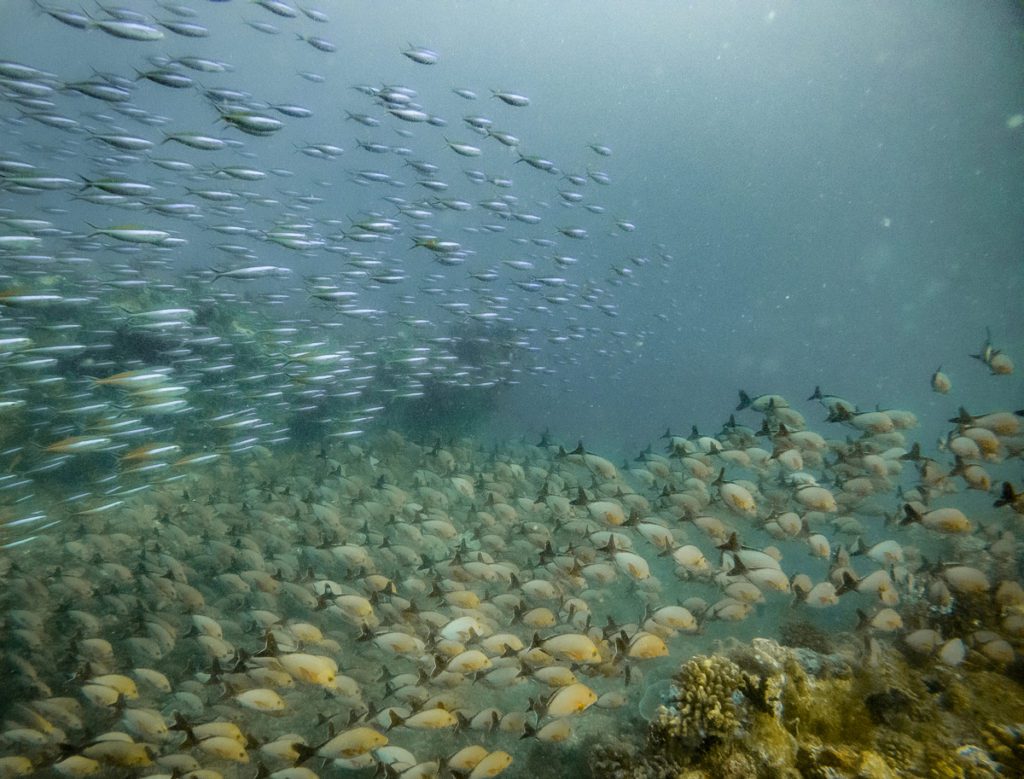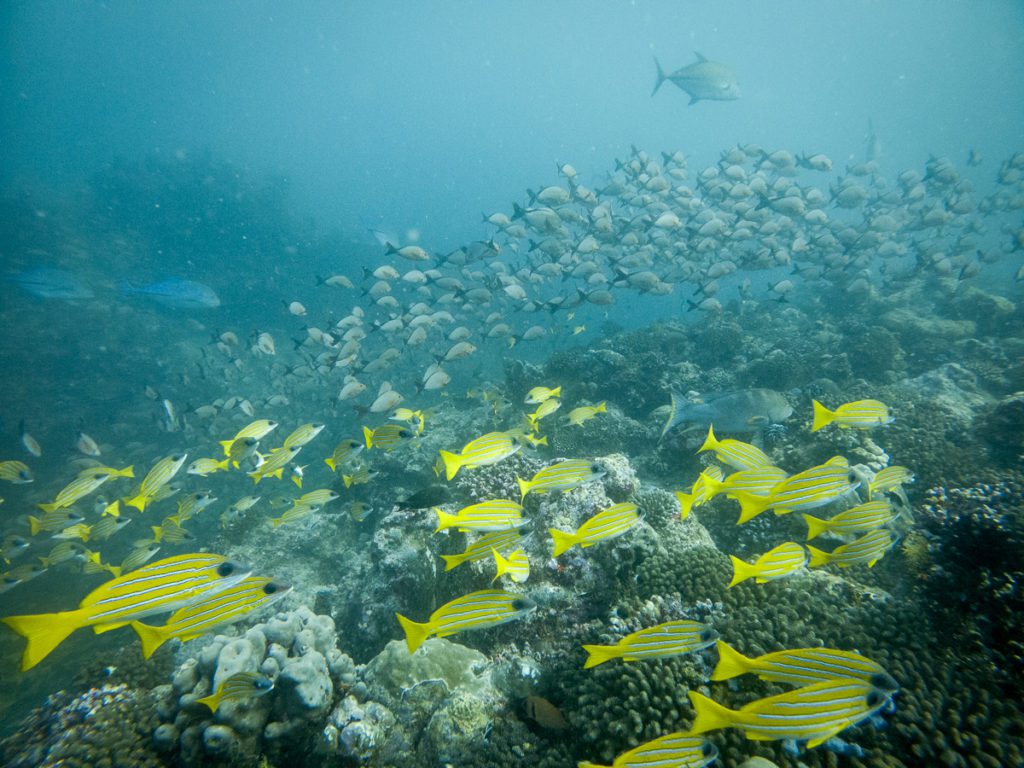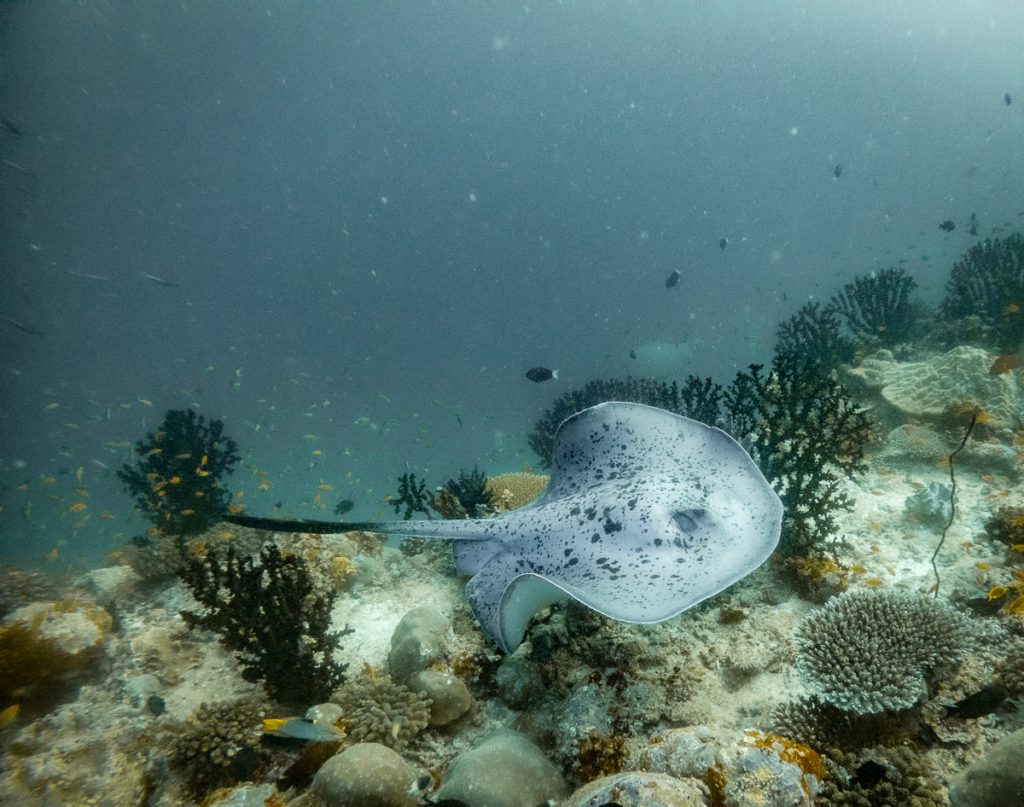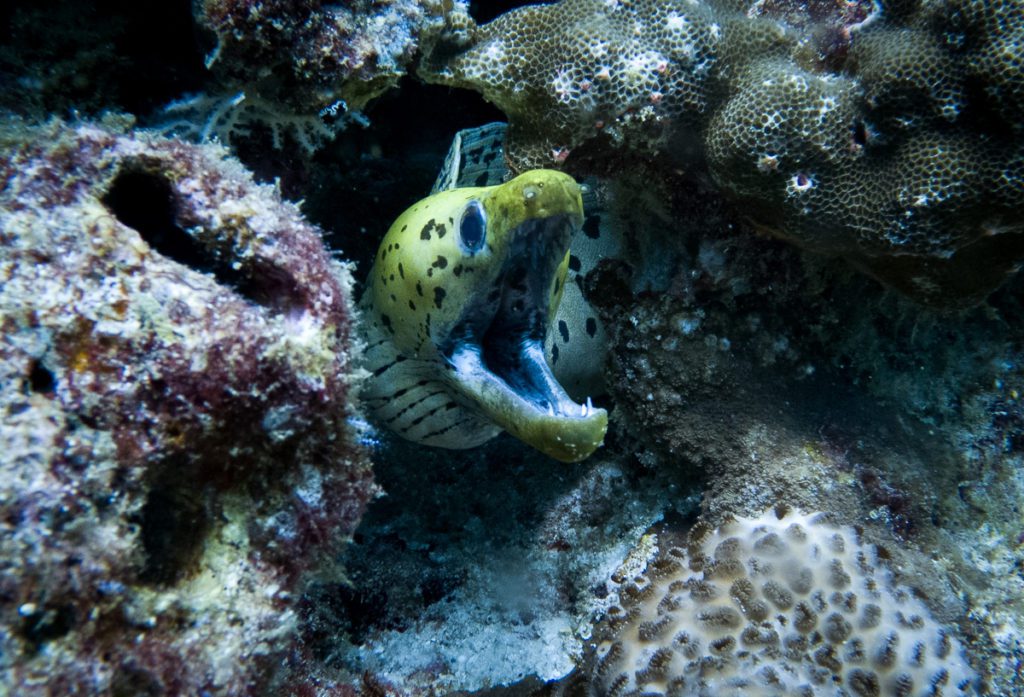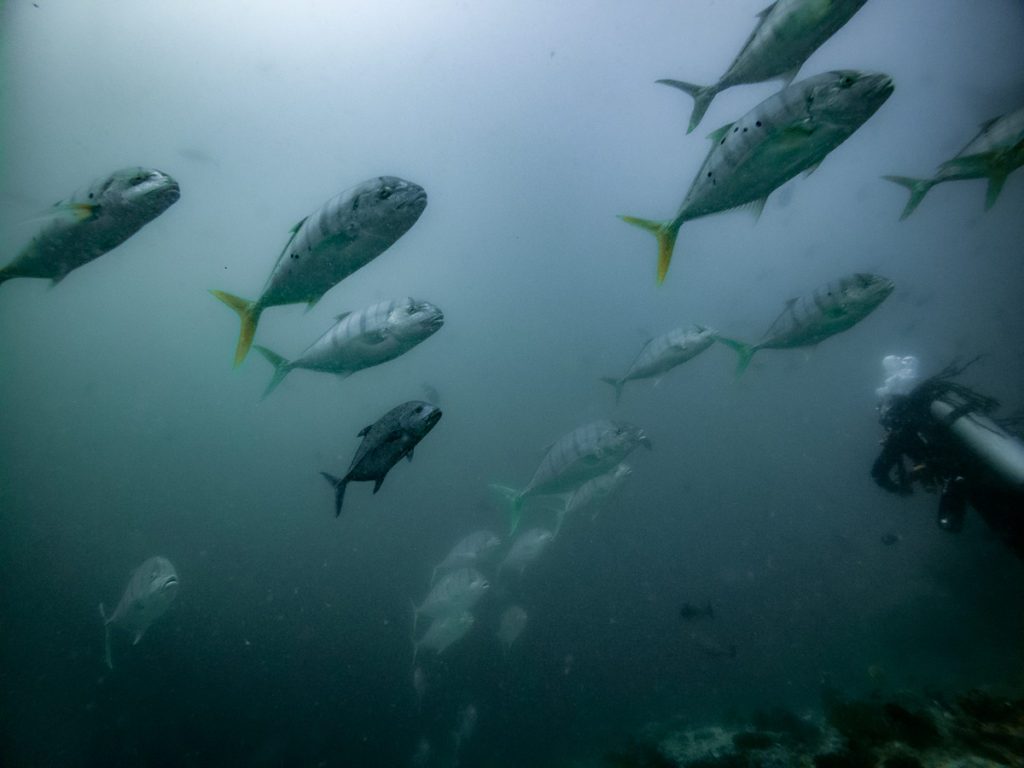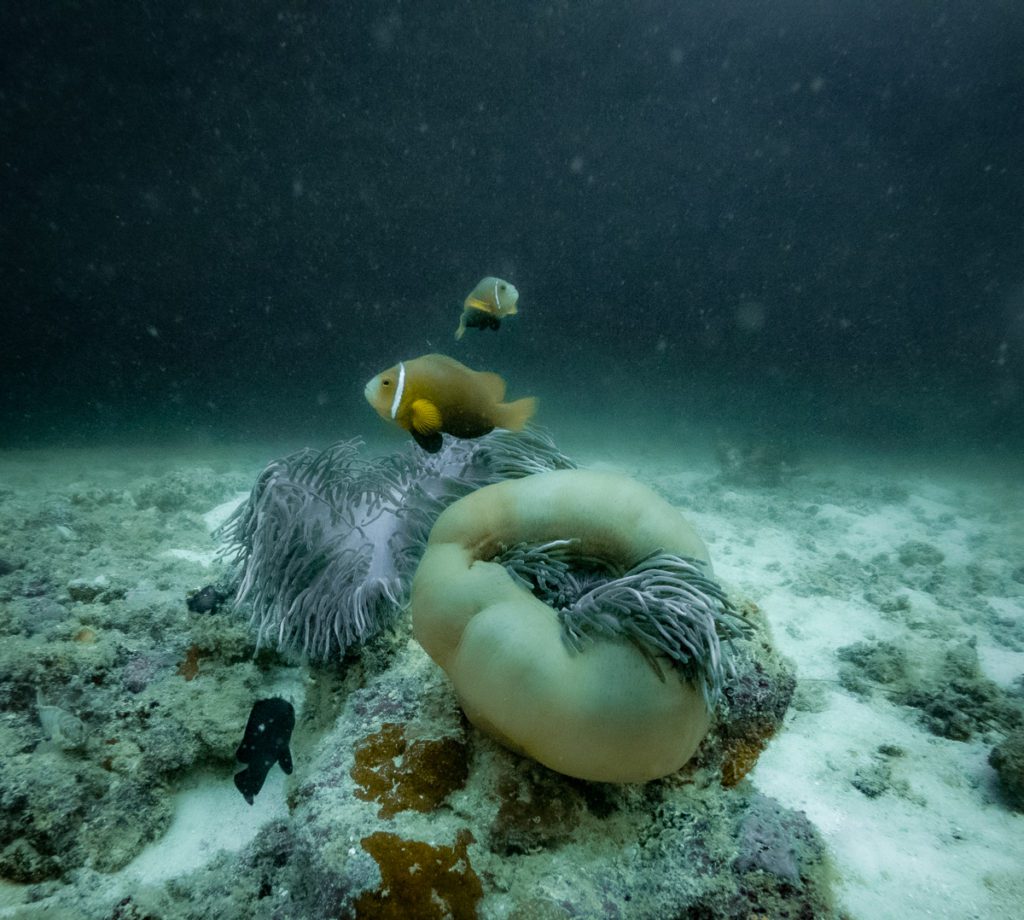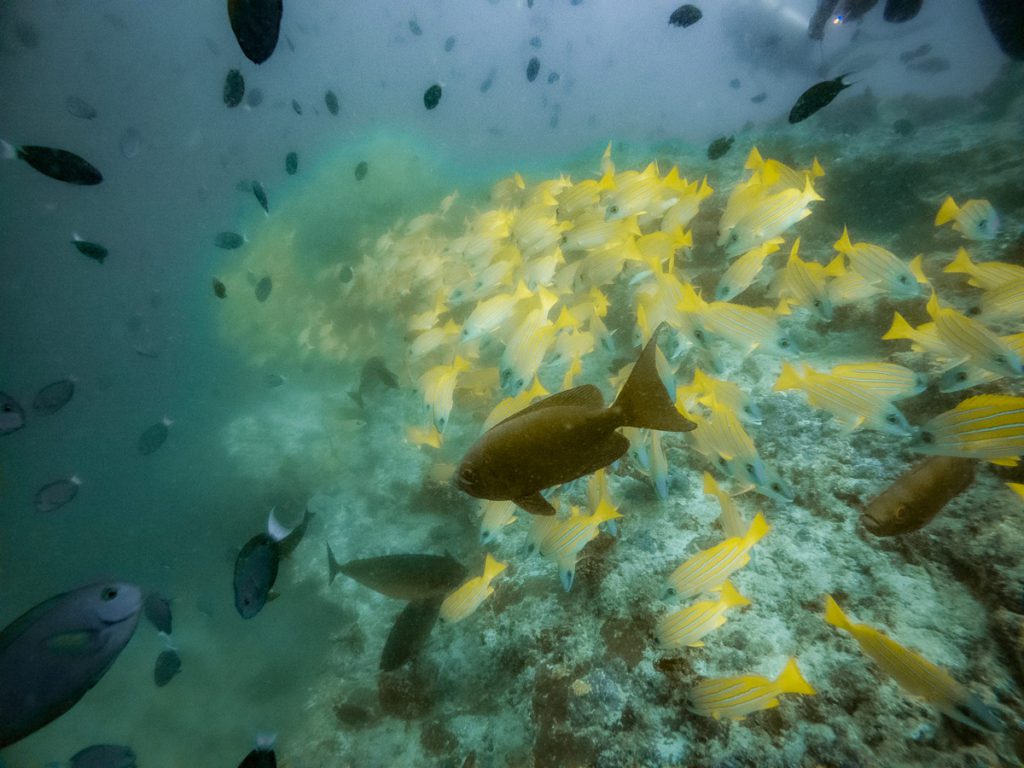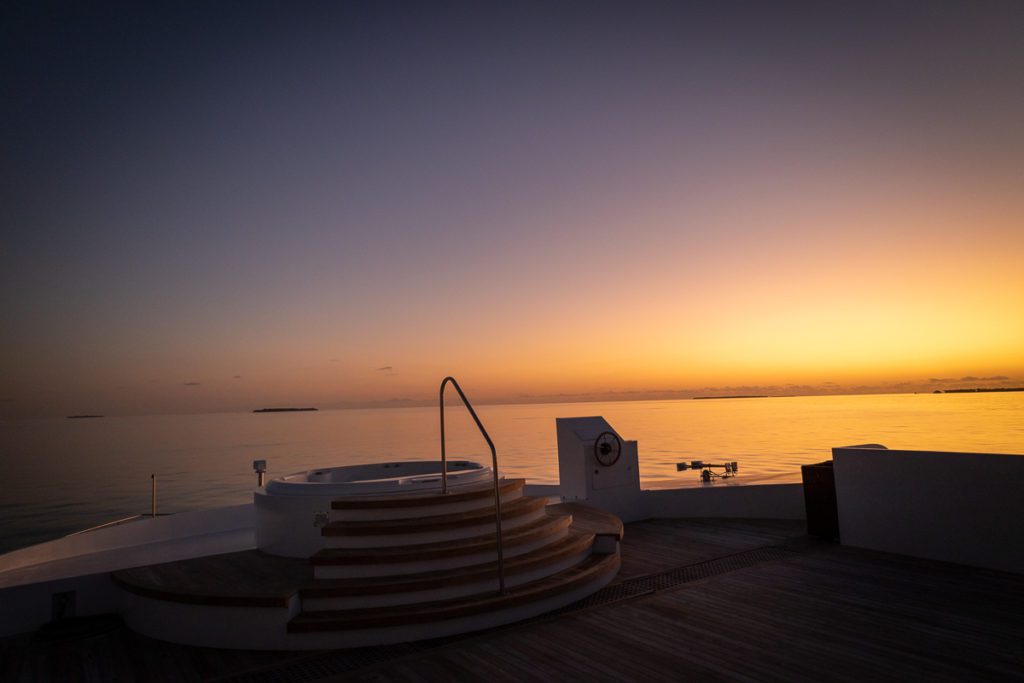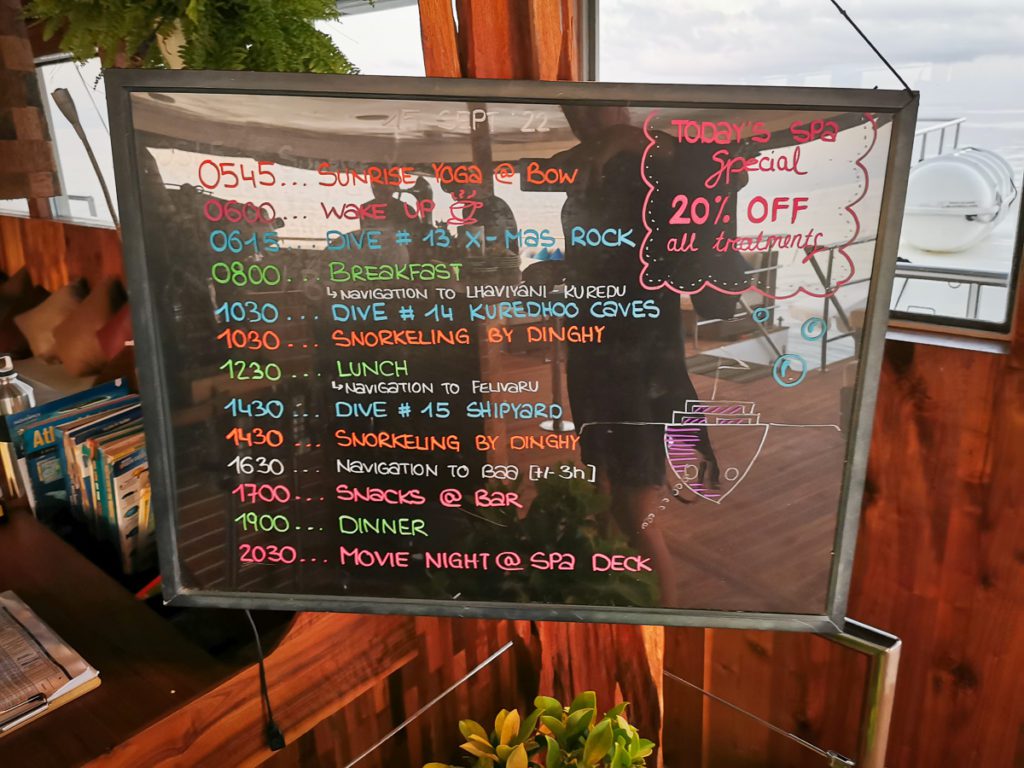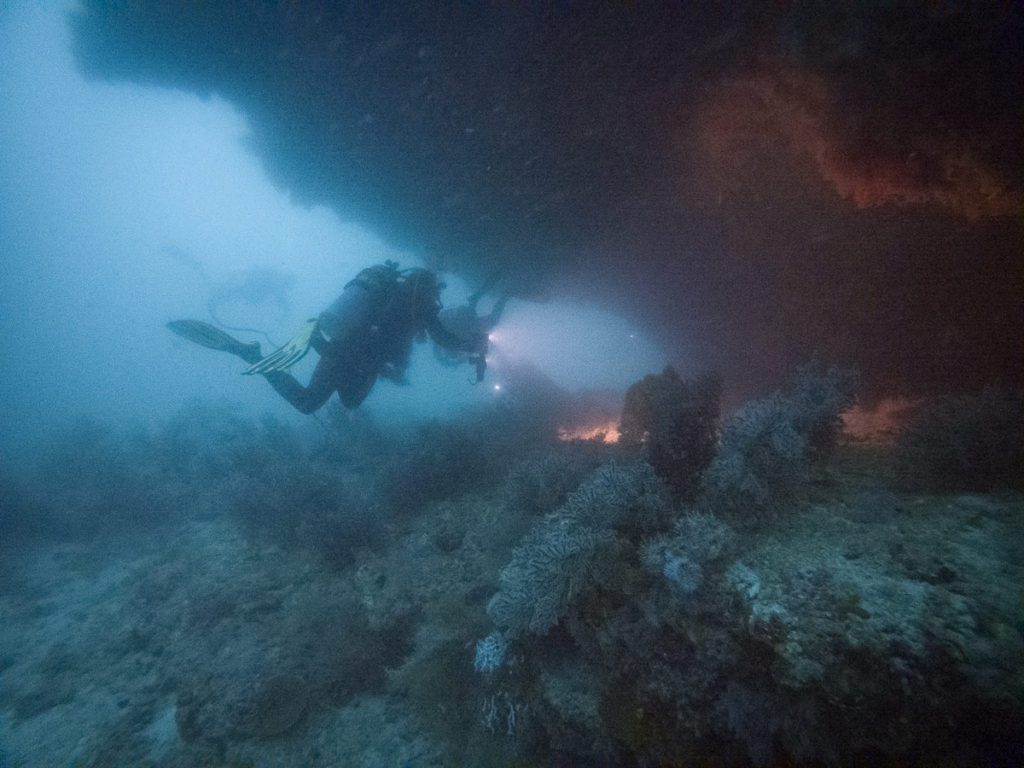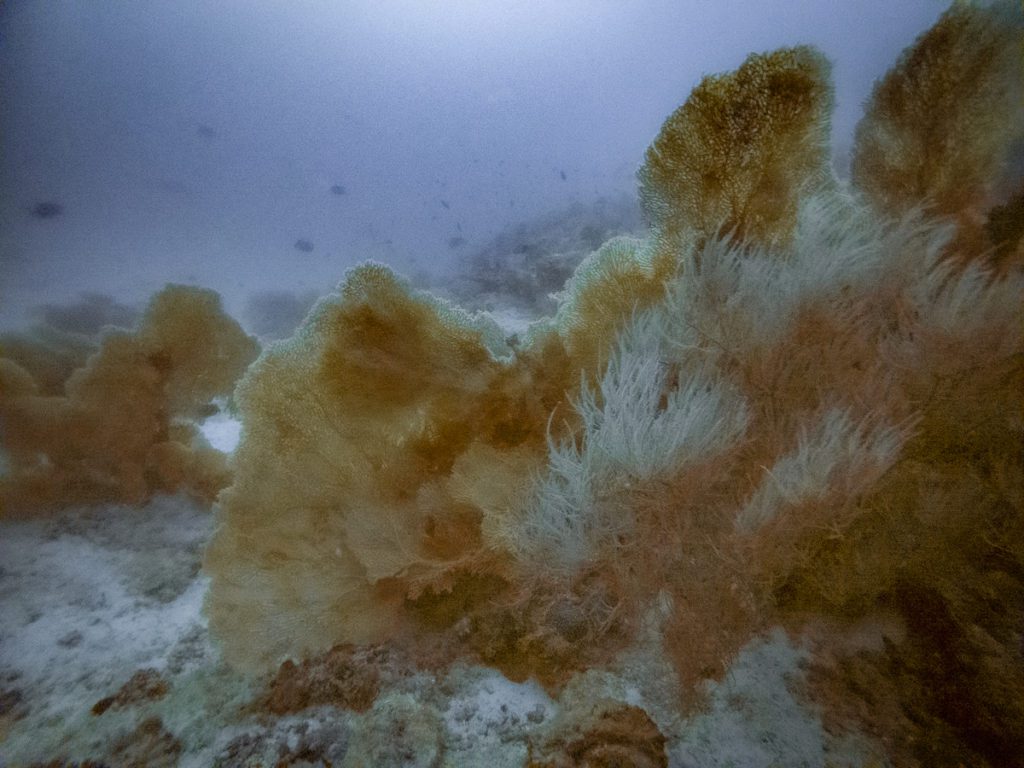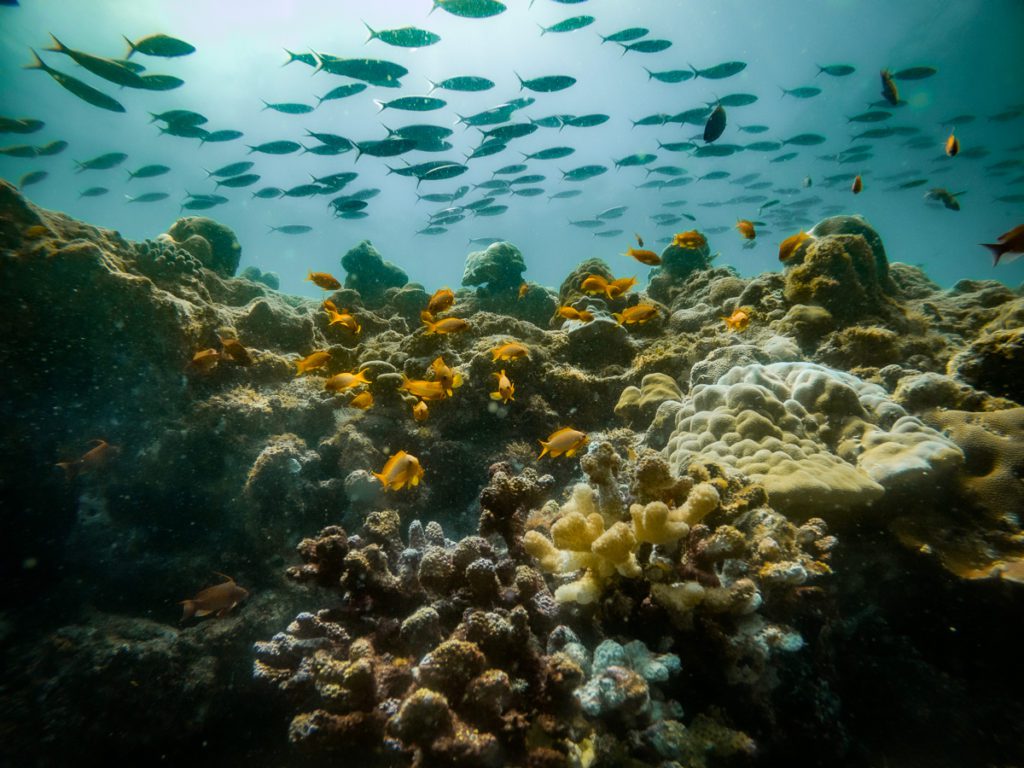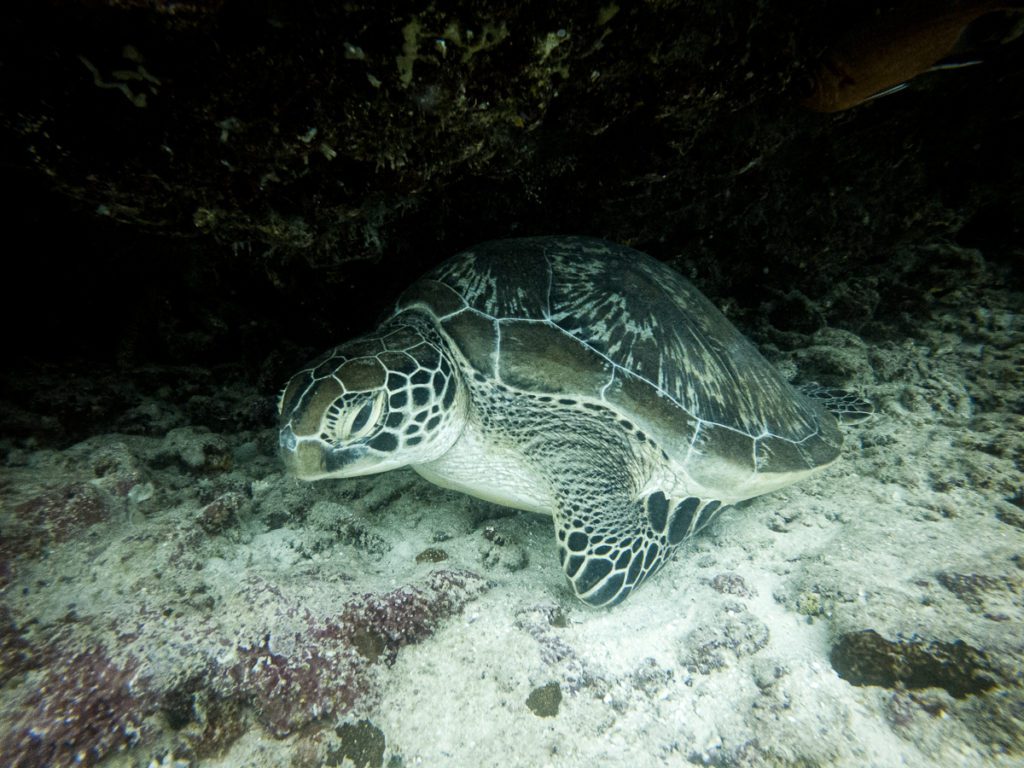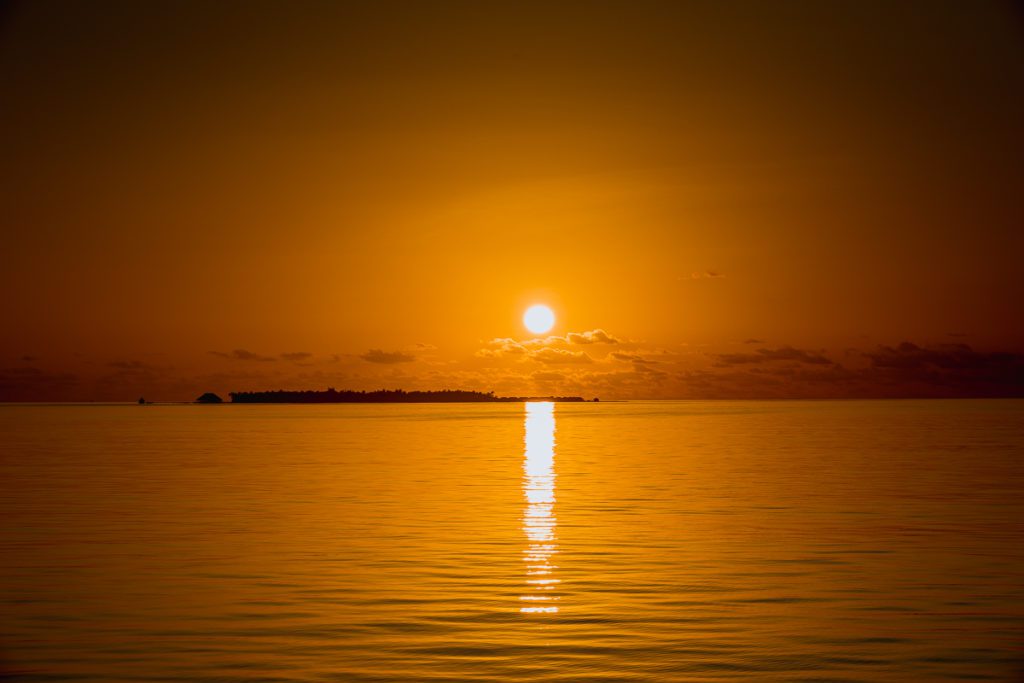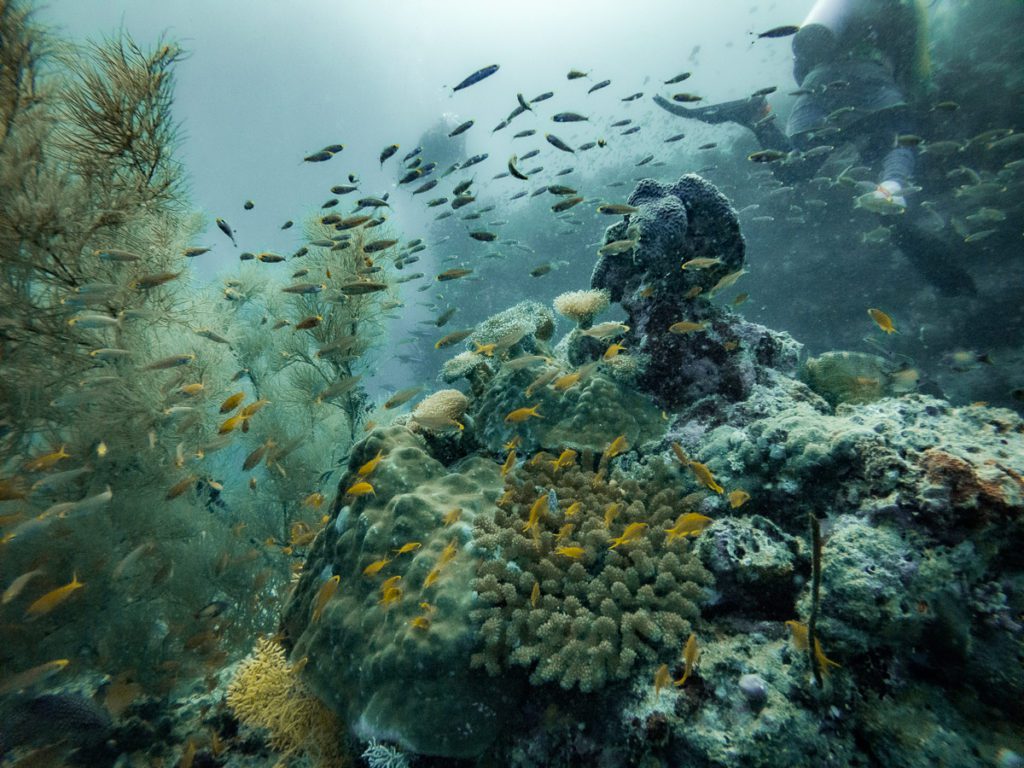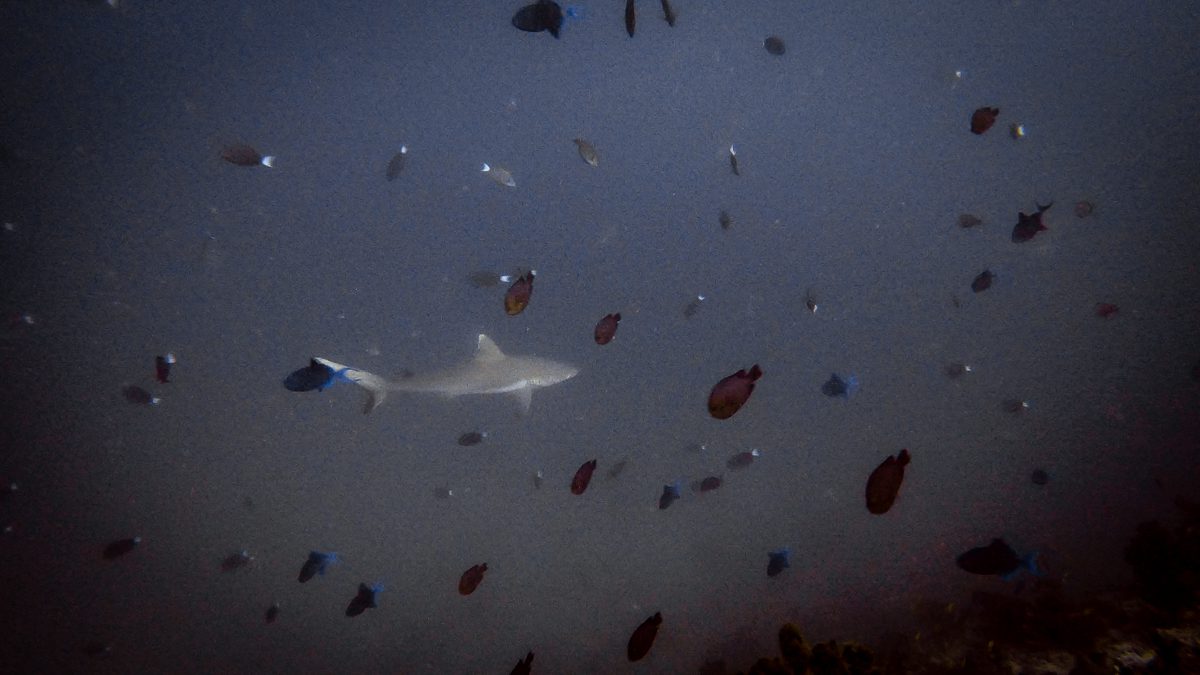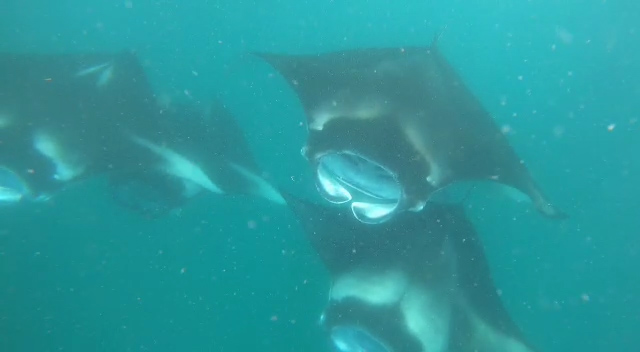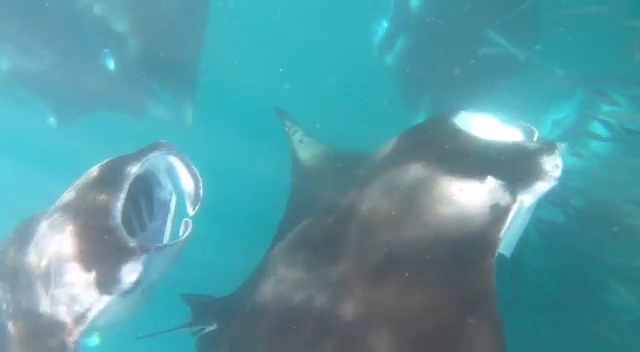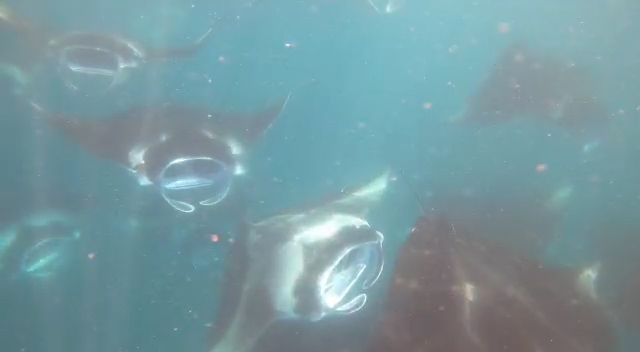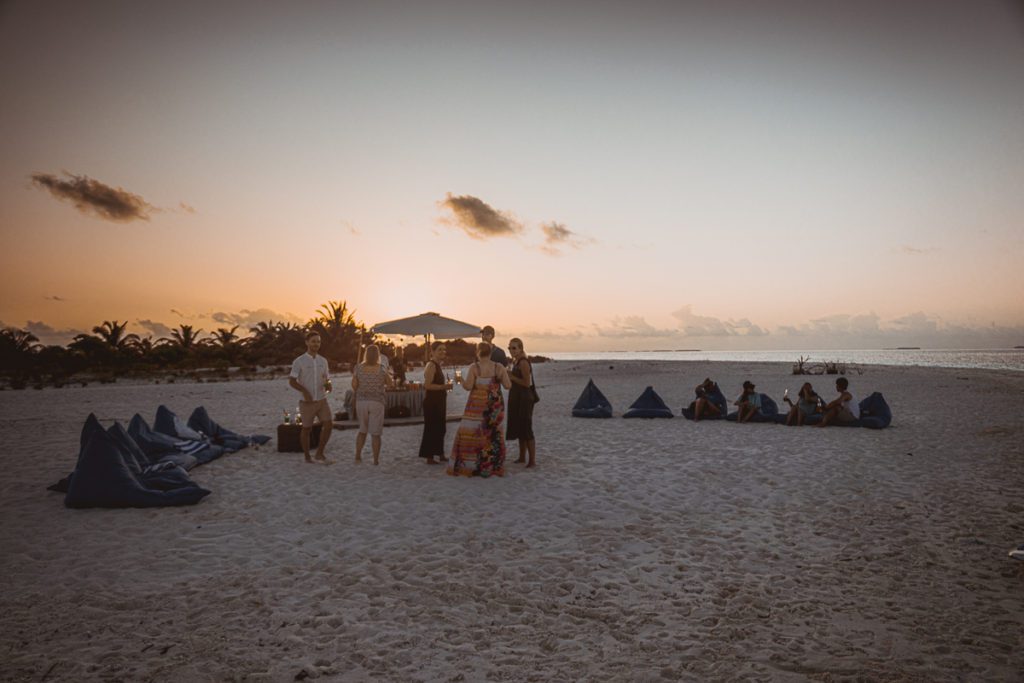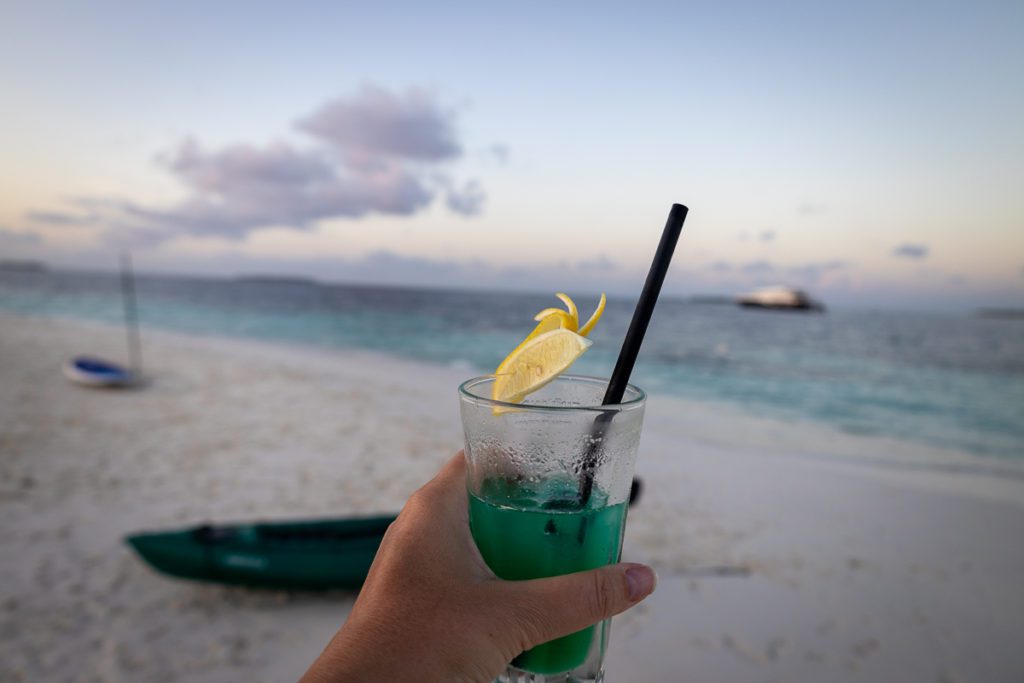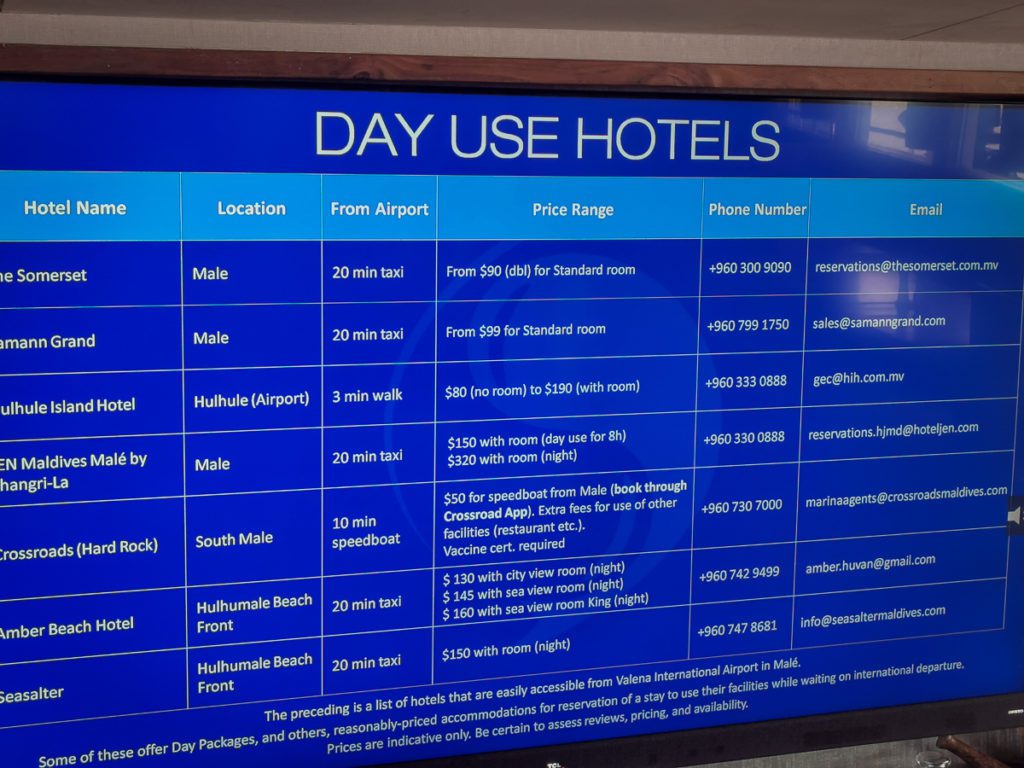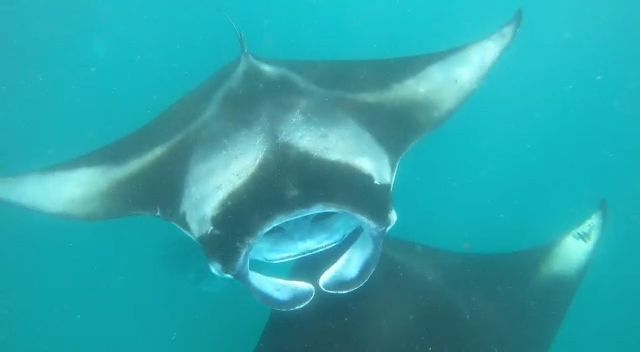Scubaspa Maldives review: Diving and searching for Mantas in the Maldives Far North
Is the Scubaspa Yin getting better and better?
This is my second cruise on the Scubaspa Yin. A year after diving in the Central Maldives atolls, I went back on this boat for the North trip to Baa and Raa atolls. More than half the passengers on the cruise were repeating customers which tells you how good Scubaspa cruises really are.
September in Baa atoll is a particular time to be in the Maldives as this is when Mantas congregates in Hanifaru bay. More than 200 have been seen in a single day!
Content of this article:
An Introduction to the Maldives
The Maldives is an independent territory consisting of approx. 1,200 islands and sandbanks. The capital is Male, an island on the Indian Ocean, located about 400 miles from the shore of Sri Lanka.
Just to get into context, The Maldives has a well-earned reputation for being a remote paradise: the annual temperature ranges from 76°F to 86 °F (24°C to 30°C), and it’s crowded with corals, turquoise and crystal clear waters, sandy beaches, lagoons, coconuts, palm trees, lush tropical flora… and excellent dive sites!
It’s no surprise that more than 1.5 million tourists visit the islands yearly. The country has become a flagship in the luxury travel sector. The islands’ geography offers the ideal set-up for high-end resorts, spas, diving, cruises, sports… and, of course, liveaboard.
Why and how to dive the Maldives?
The Maldives is a top destination for scuba diving, and they live up to their reputation. Divers from all over the planet come here for a reason.
The fantastic biodiversity will impress you from day one in both beauty and quantity (currently, around 1,100 species have been spotted, way more than other regions).
So, if you’re hesitant about booking a Liveaboard in the Maldives like the Scubaspa, I say go for it!
Some people will tell you there isn’t much to see, that there’s too much damage to the corals, etc. The coral landscape indeed suffered the consequences of El Niño in 2009 and 2014. Still, the recovery has been quick and evident in the last few years. Corals this year already look better than last year. The Maldives has some of the fishiest waters in the world. Where else can you see 50 mantas at once?
The water temperature is ideal at 27- 28 degrees. Underwater photographers will have a great time here, too (especially wide-angle).
I really enjoy diving in the Maldives every time I go there. I wrote a post about the pros and cons of liveaboard diving vs diving from a resort, and you can read it here.
Read on for my experience on the Scubaspa Yin liveaboard trip to the Far North of the Maldives.
Arriving on the Scubaspa Yin liveaboard
Most cruises to the far North Maldives leave from Dharavandhoo, a small local island where the airport is located.
Getting to Dharavandhoo is easy. Manta air and Villa air both run the 20 minutes flight from Male to the island. Flights cost 100 to 150 USD one way.
Check-in and boarding were efficient, so you can plan a seamless connection from your international flight. The domestic terminal is a 5-minute walk from the international terminal. I flew with Villa air, and both flights were on time and pleasant.
I met the Scubaspa team at the Dharavandhoo harbour and was whisked to the boat efficiently. I was greeted with a drink, a cold towel, and the usual diving paperwork to fill. Within 10 minutes, I was shown to my cabin. My luggage was already waiting for me in my cabin.
Review of the Scubaspa Yin boat
The Scubaspa boat is still as stunning as last year. Unless you want to charter your own boat, it is probably the most luxurious diving liveaboard in the Maldives. It is a world-class five stars vessel, and it is easy to see why they call it a floating resort. It is large and stable with large cabins and plenty of lounging and relaxing areas. It is one of the few diving boats worldwide with a full-on spa onboard.
It is an incredibly quiet boat. Even when you navigate and the generator is on, the boat is silent, and you feel at peace.
For a full review of the ScubaSpa Yin, read my article on the central atolls diving trip last year.
Review of the Manta Suite on the Scubaspa Maldives liveaboard
For this week, I upgraded to a Manta suite, the highest category room on board the Scubaspa Yin.
If you want more info on their basic cabin, the Seastar suite, read my Scubaspa Yin review from last year.
The main difference between the Manta suite and the Seastar suite is that the manta suite is located on the higher deck; it’s larger and offers a huge panoramic window. I absolutely enjoyed watching the paradise island of the Maldives while in the cabin. I also got to witness some incredible sunrises! My manta suite was at the front of the boat, and there was no walkway in front so the windows had privacy and I would keep the curtains open most of the time.
The Scubaspa manta suite is conveniently located on the same floor as the bar, restaurants, and the area to board the Dhoni. It lets you quickly get from the diving Dhoni straight into your shower.
The Manta suite is larger than the Sea star suite. The cabins on the Scubaspa boat are definitely larger compared to other liveaboards in the Maldives.
The suite has a large comfy bed for a restful sleep after all the diving. There is a seating area with a small table and two chairs. Ample storage rooms are available with a large cupboard and under the bedside tables where you can store suitcases. The cupboard hosts a safety deposit box.
The room looks relatively modern, and the wooden decoration gives it a natural feel. It is very well insulated and was super quiet throughout the whole trip. The only noise you can hear is the anchor being pulled up and down. But as this only lasts 5 minutes once or twice a day, it was not bothersome.
I could barely hear the motors when navigating and sometimes would not even realize that the boat was moving. It was that peaceful!
AC is individually controlled. I like that they have installed an air exhaust fan so that if you don’t want to use AC, you can still get fresh air into the room.
Two glass water bottles were available, and they would be refilled by the staff daily, so the room was always filled with drinking water.
The manta suite is a gorgeous room. Diving liveaboards often save space on cabins using bunkbeds and tiny spaces. By offering large suites, the Scubaspa liveaboard places itself clearly in the luxury category.
Review of the bathroom on the Scubaspa Maldives
The bathroom of the manta suite is spacious. The shower has constant hot water and good pressure. I liked the clotheslines to dry swimming suits. It’s also worth noting that their septic system accepts toilet paper, so you can throw it in the toilet (which is not the case on most liveaboards).
Shampoo and shower gel are provided. An improvement over last year is that they now also provide conditioners to take care of your hair after all that seawater.
There are two bathrobes in the room, which you can use to go to the Spa.
Review of the diving organization on Scubaspa Yin
Spa and diving
What makes the Scubaspa unique is that they are not only about diving. You can choose a diving package, a spa package or a spa and diving package.
The Diving package includes 17 dives ( about three dives a day), while the diving and spa package includes six dives and four massages. No night dives were offered during our trip to the Far North. Night dive lovers might be disappointed, but it also means we had more time to enjoy the deserted islands with beach cocktails, barbecue, and water sports offered to see the sundown on land. And most of those islands and beaches were marvelous!
All the diving guests are assigned to a diving group for the week and the group’s size range from two to six divers. My group during this trip had six divers, and everyone was an advanced and competent diver.
Tip: Hiring a private dive guide for the week is possible. A guest during our week who was passionate about macro photography had done just that so that she could focus on what she wanted to see.
A few guests were doing their open water diving, but those were assigned to their own group. The Scubaspa is an excellent boat for new divers. They offer a whole range of classes beyond open water certification.
Tip: Nitrox is available for 100 USD per week, which is helpful on the Far North itinerary, as most dives are deep pinnacles, and we would spend a lot of time diving at 20 or 25 meters.
The tanks were always perfectly filled with Nitrox content between 31 and 32. A boat attendant would systematically analyze the Nitrox content in front of us before each dive.
Diving from a Dhoni
Like all Scubadiving in the Maldives, diving is done from the Dhoni, a smaller boat that accompanies the Scubaspa liveaboard. The journey on the Dhoni to the dive sites was usually short. It just gave us time to gear up. The Scubaspa Dhoni is top-notch.
Tip: There is a water refill station in the Dhoni, so if you want to hydrate before or after the dive, bring your water bottle with you.
Competent dive guides and professional dive briefings
There were four dive guides during our trip. Dive guides are, in my opinion, the most important people working on a liveaboard, as they can make the difference between having a good dive and having a great dive.
Sabrina, Budi, Javid, and Branden all were competent and friendly.
I was diving with Javid, and he knew the dive sites well. He is a good spotter and found us a few cool-looking nudibranchs and shrimps. The dive briefings were professional, with a map of the dive site, a dive plan, and instructions on the current we were likely to encounter.
The diving was overall well-organized. They would announce the three dive sites for the next day, and you could choose which dive you wanted to do. Everything was run like a well-oiled machine with diving at pre-set times. You can see that this boat has been running for a while, and all the staff know what to do. As the dive site is pre-set, they would not always be optimally timed with the tides and current conditions. The exception was Hanifuaru Bay for which they altered the program as soon as they heard mantas were in the Bay.
Diving rules in the Maldives
Be aware that the Maldives has a set of rules that can be frustrating to the most experienced divers. The maximum dive time is 60 minutes (or 50 bars). The Maldivian government mandates that dives can’t be deeper than 30 meters.
They require a 24-hour surface interval before your next flight, even though organizations like DAN recommend 18 hours. This is required regardless of whether you fly with a jet or a small seaplane. So, if you have a morning departure flight, you won’t be allowed to dive on the next to last day.
I am all for supporting safe diving, but I am not sure those conservative rules help save lives. One thing they might want to consider is to prohibit the use of jetskis on top of the most popular dive sites. I have been surprised a few times by jetskis speeding by as we were surfacing, which could easily cause dramatic accidents.
Review of the Food on the Scubaspa Yin liveaboard
The food was varied and tasty. They have a great cooking team. All the meals are served buffet-style and have numerous options, including for vegetarians.
Breakfast would be served at 8 am after the first dive. It included bread, croissants, cereals, and fruit. The hot breakfast option included four or five dishes that changed every day. We even got to try some Maldivian food for breakfast.
They offer a live cooking station for eggs and waffles, and the chef will prepare your eggs in any style you want.
Every day, we could choose between two freshly blended juice or smoothies, which were delicious. Chia seeds and other healthy foods were available most days.
They would make fresh bread everyday!
Lunch would be around 12:30 after the first dive.
They usually went above and beyond for dinners.
On our first night, they set up a luxury barbecue on a deserted island. The attention to detail was stunning. They brought a bar, bean bags, and plenty of decorations to make the place enchanting.
We had a few more cocktails time on a deserted island where they would bring a bar and music.
The outdoor sit-down dinner was also entertaining. We went on a world tour of cuisines with Italian, Mexican, Mediterranean, and even Asian nights.
Review of the crew on Scubaspa Yin
Expect to be pampered while cruising the Maldives on Scubaspa Yin. Carl, the cruise director, has spent many years working for brands like the Four Seasons and Aman hotels. He understands high-quality service and does an outstanding job running the ship.
During our cruise, there was over 30 staff for 16 guests! The boat ran like clockwork, and all the staff was friendly and professional. Special mention to the waiter, bar crew, and Dhoni boat crew, who were always so helpful.
Review of the Itinerary on the Scubaspa Far North Cruise
There are a lot of exciting places that you can visit when you are in the Maldives. One of the most popular places is the Baa Atoll, where the Scubaspa cruise started from. This is the best place to snorkel with hundreds of manta rays in the Hanifaru bay, a protected UNESCO Biosphere Reserve area. You should visit this place between May and November if you love watching beautiful manta rays. The peak times for spotting them are during the new and full moon. You might also see whale sharks swimming around the Maldives when migrating to Baa Atoll from May to November.
I did the Scubaspa Far North cruise in September, which is in the middle of the high season in Baa atoll, for a chance to see hundreds of mantas congregating in the area. The Scubaspa North trip, however, goes much further than the Baa atoll, and over the week, we got to dive in five different atolls. Because of the West monsoon season, the water was full of plankton, which attracted the mantas but also affected visibility during many of our dives that week.
Day one: Schooling mobulas and mantas
Our first dive site was Dhonfaanu house reef. It is a slope from the Donhfannu island that goes down into a wall. There is a sandy bottom at around 20 meters.
It was an incredible check dive. Not only was it easy with a gentle current along the slope, but mantas and mobulas kept coming. We saw 10 mantas and 10 mobulas and also a turtle!
Towards the end of the dive, our guide tested everyone’s diving skills to ensure they could dive safely. We had to practice mask clearing, regulator recovery, or launching our SMB.
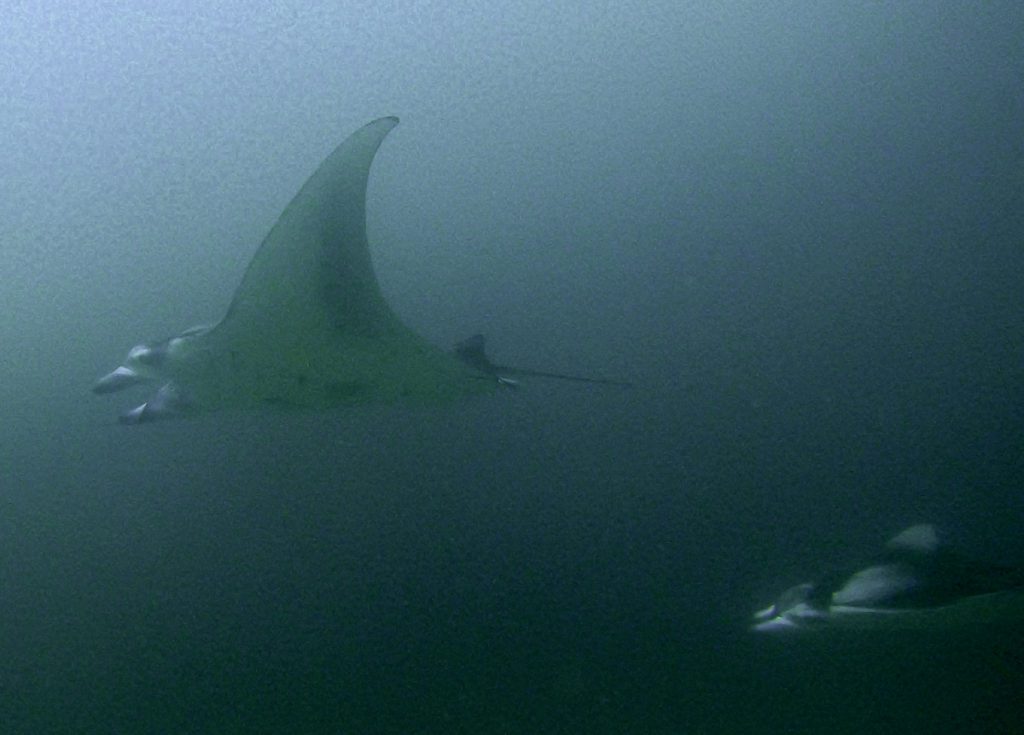
The second dive of the day was the Daravandhoo channel. It is located at the southeast corner of Daravandhoo island. The Scubaspa team heard that whale sharks had been seen in the area, so before the dive, we spent one hour navigating on the Dhoni and looking for them. Unfortunately, they must have dived as we didn’t see them.
The dive had bad visibility, so we looked at the wall more. It has pretty and colourful corals. Some of the corals were pollinating as it was the full moon. We saw two ghost pipefishes and a turtle. A pod of dolphins was jumping as we drove back to the boat.
The third dive was at Dharavandhoo corner channel, the reef at the corner of Dharavandhoo island near the airport.
After all the dives, the day was far from over. We navigated toward Finholu island, where we spent time on the beach.
Paddle boards and kayaks are available.
A sunset yoga class was organized, a great way to end an action-packed day. The yoga stretches feel so good after diving!
The Scubaspa team organized a beach barbecue that turned into a beach party! What a first day!
Day 2: No mantas, bad visibility underwater but beautiful sunset
We stayed for the day in the area near Hanifaru Bay as we were waiting for the chance to go and snorkel with the mantas in the bay. The Hanifaru bay is permanently watched by rangers that will inform tourist boats whenever mantas are in the Bay. We, therefore, were hoping for the whole day that the ranger would call to announce the arrival of mantas. Unfortunately, it didn’t happen that day, and the Scubaspa team organized three dives for us in the area.
The first dive site was Donfaanu Thila.
It is a shallow pinnacle that starts at 10 meters. It goes down in a wall to 30 meters. There are overhangs and a cool swim through a tunnel that goes from 20 meters to 26 meters.
We encountered many sweetlips and yellow snappers. The visibility was bad; we didn’t see many big fish and spent more time looking at the wall. We found a flatworm, a stone fish, and a few octopuses.
For the second dive, we went to the Dhigu Thila dive site. It is a long pinnacle that stretches for over 400 meters. It has a shallow reef at 6 to 7 meters that goes down to a wall at 20 meters and then becomes a slope. Visibility wasn’t good, so we didn’t see much, but I was told that you could often encounter eagle rays and mantas at this dive site.
After the third dive, we navigated to Raa atoll during the sunset. I was on the top deck watching the sun coming down over the sea, and the feeling of peace and beauty was absolute.
The Scubaspa team then prepared dinner under the stars on the ship’s bow. Once again, the attention to detail and decoration were stunning.
Day 3. Beautiful corals and fish action and beach time
We woke up at 5:45!! In the Vadhoo region on the Baa atoll (on the southern side).
The first dive site is called Amazing pinnacle!
It is a pinnacle starting at 14 meters and going down to 30 meters. It is composed of steep walls and overhangs. Boulders in the sand around the pinnacle are covered by the most colorful corals.
The amazing pinnacle was a stunning dive and maybe my favorite dive of the whole week. The corals were stunning for the Maldives, from the black corals down at 30 meters to multicolored and diverse corals at the top of the pinnacles.
The number of yellow snappers reminded me of Kudara Thila in the Ari Atoll. But without the crowd… We were the only boat diving this amazing pinnacle.
Fish were everywhere. Schools of surgeons, angels, and fusiliers. A few trevally and tuna started hunting them. A giant barracuda even made an appearance; to top it up, we saw two mantas flying by. A turtle was eating the corals on the top of the pinnacle. What a fantastic dive!
We kept moving west to the Kudathuladhoo region of the Raa atoll.
The Kudathuladhoo dive site is also a deep pinnacle, starting at 12 meters and coming down into a wall. This was our first dive with a bit of current, and we managed to reach the exposed corner. We used our reef hooks and watched the show unfold. A few grey reef sharks were hunting the fusiliers and snappers. The staghorn corals on this dive site were gorgeous.
A third dive was offered, but I chose to chill on the beach. The Scubaspa liveaboard captain found this stunning sandbank in the middle of nowhere. The sand was absolutely perfect. The Scubaspa team brought kayaks, paddle boards, and beanbags. They even set up a bar on the island. It was dreamy!
Day 4: More stunning pinnacles with nice corals
The labyrinth dive site was our first dive for the day. It is in the West part of the Raa Atoll. It is a pinnacle with many swims through. The main pinnacle starts at 15 meters and goes down to 25 meters.
Large boulders lie around the pinnacle and create those swims through canyons. Those canyons are undeniably stunning. They are full of table corals, gorgonians sea fans, staghorn, and black bushes. Macro lovers will be in heaven as there are nudibranchs everywhere. I didn’t bring my underwater macro camera for this trip to the Maldives as I expected to focus on mantas and other big pelagics. I regretted not having it.
Tip: if you have a camera for macro photography, bring it for the Far North trip, as there are many nudibranchs!
This dive site was teeming with life. Schools of snappers, squirrels, and fusiliers were everywhere. A few trevallies, tuna and bump head parrot fishes enjoyed the hunt. In the middle of all that, a marble ray majestically swam by. It was a fantastic dive!
Kotterafu manta point dive site is a large pinnacle with a manta cleaning on the top of the reef. The cleaning station starts at 10 meters. Unfortunately, there were no mantas there as the current was going in the wrong direction, so the team decided to dive the slope around the island. It was a sad dive with mostly dead and broken corals. We heard dolphins during the dive, but they didn’t come close. We only saw them above the water on our way back to the boat.
We then navigated three hours to Noonu Atoll in the region around Orismasvaru. The water was flat like a lake, and it was a lovely journey under the sun.
The third dive of the day was Orisma pinnacles. It is one of the famous dive sites in the Northern Maldives. It starts at 14 meters and becomes a sandy bottom at around 25 meters. There are overhangs and a small canyon at 20 meters. Visibility was horrendous with green and dirty water. It was so dark that most of the anemones were still closed! However, the number of fish was extraordinary. I can only imagine how good this dive site would look with good visibility. We still managed to see grey reef sharks, white tip sharks, eagle rays, schooling tuna, and an incredible amount of trevally fish. The reef fish were also present with sweetlips, groupers, and fusiliers. Don’t forget to look at the pinnacle, as there are many colorful soft corals and macro critters there.
Day 5: Christmas tree-shaped pinnacle, turtles and wrecks
We woke up again at 5:45 for the first dive at the Christmas Rock dive site.
A Yoga class was scheduled at 5:45 am, but that was too early for me. The Christmas Rock dive site sits on the South Western side of the Noonu atoll.
This pinnacle is unique because it is shaped like a Christmas tree with large overhangs at the bottom. It starts at 15 meters and goes down to 25 meters. The Christmas rock pinnacle is covered by rich, soft corals and is colonized by millions of anthias fish. The soft corals on this rock are amongst the nicest I have seen in the Maldives. This attracts many Nudibranchs, and we also saw two ghost pipefish. Visibility was still bad, but we saw a few jacks hunting and an eagle ray swam by.
Tip: This dive site can have powerful currents, so bring a reef hook. But watch where you hook, as it is hard to find a place on the pinnacle where there are no corals.
Back on the boat, we moved on to the next atoll. The Lhaviyani atoll where we dove the Kuredhoo turtle caves dive site.
This reef is a drop off the island with a mix of walls and slopes. There are many overhangs. While the corals and fish life were not amazing, looking inside the little caves was fun as we found a few green turtles sleeping. They were pretty big!
Tip: bring a torch for this dive to look into all the overhangs.
We then moved to the west of the Lhaviyani Atoll to dive the Felivaru shipyard wrecks. They are part of a shipyard where two wrecks have been sunk due to a fire. Conveniently, the first wreck starts at one to two meters and goes down to 32 meters. The second wreck starts around 20 meters and goes down to 32 meters. The wrecks are full of life. We found a pipefish amongst the corals. After the dive, a parrot made an unexpected landing on our Dhoni ad
After the third dive, we returned to Baa Atoll to anchor there for the night.
Day 6: Manta madness!
We returned to the Baa Atolls, still hoping to witness the manta aggregation in Hanufaru Bay. The call from the rangers didn’t come in the morning, so we dove the Five rocks dive site.
It is a tiny pinnacle with a diameter of only 90 meters. We were the only boat there, but even then, it sometimes felt crowded underwater. As its name implies, it is composed of five rocks. The shallowest part of the rocks is at 12 meters, and it drops down to 30 meters, surrounded by a sandy bottom. There are scenic canyons and overhangs. Corals are amazing, especially on the top reef with nice hard corals covered with anthias fish. There was minimal current when we started the dive, but the current picked up slightly during the dive, and all the pelagic fishes showed up. Trevallies and sharks started hunting, and it was phenomenal to see.
There is a large reef south of the pinnacle where we ended the dive, but that reef was underwhelming, and I would recommend spending more time on the pinnacle.
After a healthy breakfast, the rangers called to say that mantas were in Hanifaru Bay! There was a sense of excitement on the boat, as this was the event we were all waiting for.
To protect the mantas, diving in Hanifaru Bay is not allowed. You can only snorkel there for a maximum of 45 minutes. When we arrived in the bay, there were already 10 boats present and many people in the water. It felt somehow chaotic, especially since many of the snorkelers were inexperienced and were kicking and screaming everywhere. I got hit by a few fins…
Tip: The best strategy is to stay a bit away from the mass of people. If you stay quiet, you have more chance of the mantas coming near you.
Snorkeling with those manta trains was a once-in-a-lifetime experience. Those gentle giants are elegant and not shy. They came so close to us and were everywhere. Despite the crowd, it was exhilarating and almost overwhelming. It is definitely a once-in-a-lifetime experience. What an amazing way to end a great week of diving and relaxing on the Scubaspa Yin liveaboard!
Tip: The bay is large and requires a lot of snorkelling, so if you are not a good snorkeler, you might want to bring a lifejacket.
After all this adrenaline, we needed a few hours to relax on board. We then spent the end of the afternoon on a secluded island and watched the sun come down with cocktails and appetizers. It was already time for the farewell dinner.
What a week this had been!
On the last day, departure from the boat is around 9 am. If you have a late flight, you might want to book a day room in a hotel as the male airport is unpleasant and they won’t allow you to enter the airport up to 3 hours before the flight.
This is the list of day-use hotels recommended by Scubaspa.
Why does Hanifaru Bay attract so many mantas?
The rare shape of Hanufaru Bay can attract hundreds of mantas from many different places in the Maldives. Hanifaru Bay is a narrow and long bay with a dead end. It serves as a scoop for all the plankton coming from the deep sea. The plankton stays trapped in the bay. From May through November, the southwest monsoon current in the Indian Ocean pushes the nutrient-rich water into the western part of the bay.
All those factors attract a lot of manta rays to Hanifaru Bay every year. Manta rays have unique feeding tactics. They usually eat the tiniest organisms by filtering tons of water close to the surface. They capture many animals, such as krill, tiny fish, shrimp, jellyfish, and other plankton, with their gill rakers. They will form a chain and swim in a row when they feed together. We could observe this exciting phenomenon in Hanifaru Bay with trains of over 20 mantas!!
In Hanifaru Bay, you should never leave your camera at home. It is the best place for you to take pictures of the beautiful scenery at this place. However, you need to know that you cannot use strobes and lights when taking photos around this area. You can consider using the wide-angle or fish eye lens. With this type of lens, you can capture the whole scene of the feeding time. The feeding spectacle can be captured in motion better than in images. I did the video below with my GoPro, and it turned out quite well.
How to visit Hanufaru bay?
Being on a liveaboard like the Scubaspa that visits the north of the Maldives and the Baa Atolls is the most convenient option. There is, however, no guarantee that the mantas will be in the bay during that week, so to maximize your chances, you might want to stay in the Baa Atoll in a resort or hotel for a few days after your cruise. The Baa Atoll is home to fantastic resorts like the Four Seasons, a few minutes’ boat ride away. Another more affordable option is to stay on Dharavandhoo island. You get to experience life in a Maldivian village.
Tip: If you stay on Dharavandhoo island, bring mosquito repellent, as I have rarely seen so many mosquitos, especially around sunset time.
Dharavandhoo divers organize diving day trips and snorkeling trips to Hanifaru Bay. I did a day trip with them, and they are very professional. They offer Nitrox. For Hanifaru, you can just leave your contact details with them to call you whenever mantas are in the bay.
You also need to know that access to Hanifaru Bay is regulated. The current price for the entrance permit is $30, which was included in our Scubaspa cruise. All the profits go to the Baa Atoll Conservation Fund. In addition, all visitors have to be accompanied by a certified Hanifaru Bay guide. Our guide gave us basic information about how to swim with mantas, but I quickly lost him amidst all the other snorkelers.
Frequently Asked Questions About the Maldives
Is the Maldives close to Seychelles?
The Maldives and Seychelles are not geographically close (there’s a distance of 2,242 km between them), even though technically, they are both in the Indian Ocean.
What is the best liveaboard in the Maldives?
The Scubaspa is definitely one of the best boats in the Maldives. I have traveled on the best liveaboards in the Maldives. Besides The Scubaspa Yin liveaboard, I have also reviewed the Duke of York and the Blue Force One Maldives which cater more to advanced divers.
What is the best time to dive the Maldives?
There is no wrong time for diving in the Maldives. This is due to the atolls being affected by two different monsoons. If you dive with a liveaboard, the boat will go to the atolls with the best diving according to the season.
January to April: This is the peak season in the Maldives. Boats like the Scubaspa go to the South and have a chance to encounter tiger sharks and many other pelagics. You can find more info about their Deep South Expedition here.
July to September is when the manta’s aggregate in Hanifaru bay, so a trip to the Northern atolls is a great idea. But there are also plenty of mantas and whale sharks in Ari atoll at this time of the year. But be aware that it is the rainy season, so you might get less sunbathing.
In conclusion of my review of the Scubaspa liveaboard Yin
There is no question that the Scubaspa liveaboard is one of the best diving boats in the Maldives for people looking for more than diving. Great staff, large cabins, and splendid food make it an outstanding value proposition. Their spa offering is unique, and they go the extra mile to provide superb activities outside of the boat like yoga classes, water sports, or beach barbecues. Scubaspa top North itinerary might be less diverse than the Central Maldives itinerary. Still, it’s a must-do for anyone wanting to encounter mantas. It also offers lovely pinnacles with good coral covers and more macro creatures than the central itinerary. I enjoyed my second cruise on Scubaspa and highly recommend the boat.
To book a cruise on the Scubasap Yin, check their website or email the at hello@scubaspa.com

